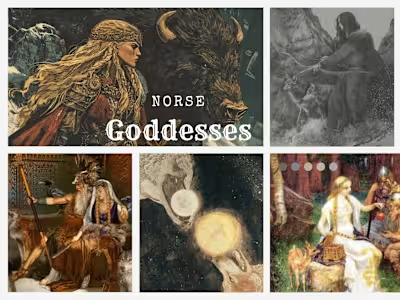Greek Goddesses: Daughters of Olympus
Aphrodite: The Goddess Of Love and Beauty
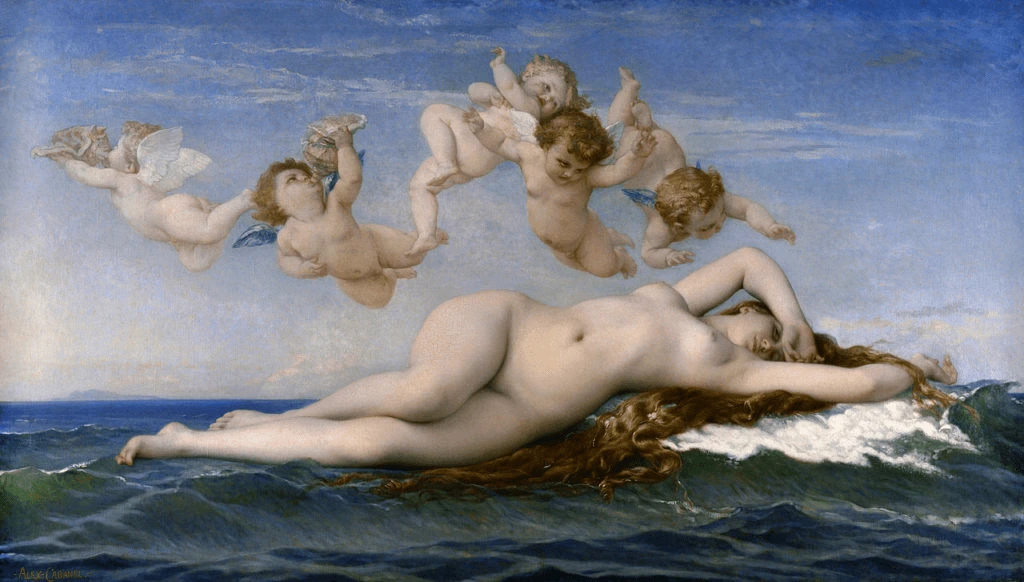
Source: Kosmos Society
Whether its painters, philosophers, writers, or the gods of man, the enchanting nature of the goddess of love and beauty has inspired many works of art and literature. As one of the twelve esteemed Olympian deities, Aphrodite is the very essence of all that is beautiful and epitomizes all that is loved: from her miraculous birth from the sea near the shores of Cyprus to tales of passionate love affairs with gods and man alike her legacy endures today and is a testament to the enduring power of myth and the human imagination.
Overview of Aphrodite
Though the goddess of fertility is known for her beauty and symbolizes romantic longing, Aphrodite also serves as the goddess of protection for prostitutes and courtesans. Furthermore, as the protector of the mariners, she also offers protection to all those who travel by sea.
In fact, the name Aphrodite comes from the Greek word "aphros", which means "foam" and seeing as the goddess was born from the foam off of the shores of Cyprus (“Aphrodite | Etymology, Origin and Meaning of the Name Aphrodite by Etymonline”), it is no wonder her name is so closely associated with the sea.
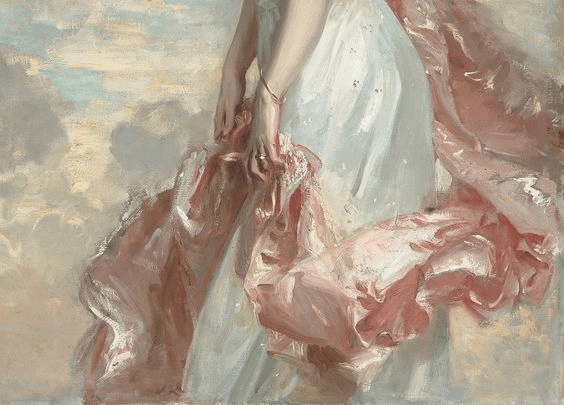
Source: Pinterest
Titles
Goddess of Love
Queen of Beauty
Protector of Mariners
Goddess of Fertility
Abilities
Honored as the goddess of love and beauty, it serves as no surprise that Aphrodite's powers include influencing matters of the heart, whether that be through matchmaking or forging connections that could end in tragedy. Lesser known abilities of the goddess include shape-shifting, which allowed her to interact with mortals unnoticed or to conceal her divine identity when desired (Martell).
However, as vain as it may sound, Aphrodite's most influential power was her eternal beauty: from the second she came to be, she served as an enchantment to all those who beheld her, and even now in modern times, Aphrodite still personifies the very essence of romantic desire and physical beauty.
Characteristics
The physical appearance and demeanor of Aphrodite played a vital role in defining her identity and inspiring her followers. Her divine beauty is a subject of admiration and awe, often described as radiant and otherworldly.
In most illustrations, Aphrodite has golden hair that falls past her waist in what appears to be ocean waves and frames her face like the foam that spills along the shorelines of the sea. Her captivating eyes, akin to the sun's warmth, further enhance her allure as the goddess of love (kapach). In every depiction, she exudes a graceful presence, moving with elegance and poise, often wearing elegant flowing garments or wearing nothing at all displaying a figure that is plush and feminine.
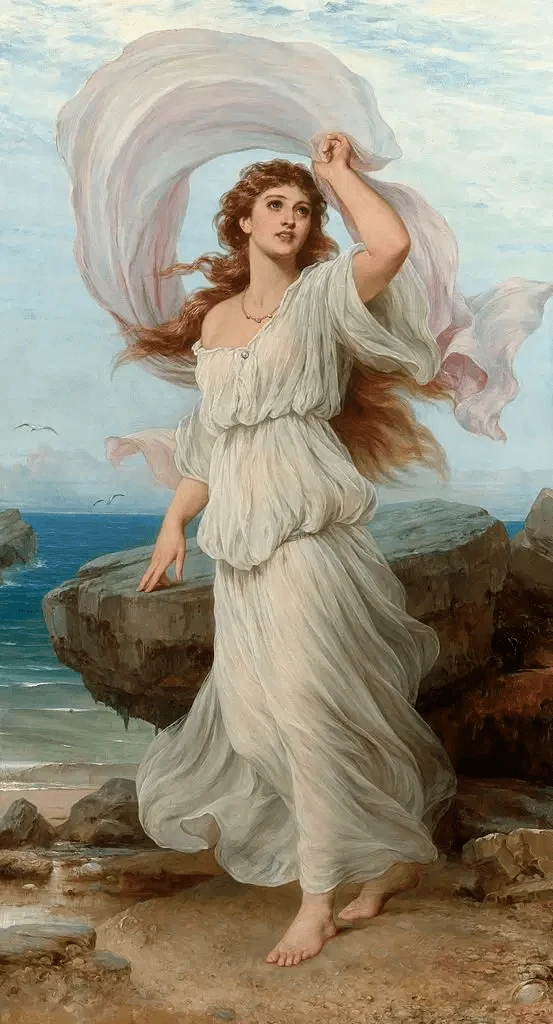
Source: The Collector
Traits
Like most individuals, Aphrodite is multifaceted and has her fair share of strengths and weaknesses. Despite being protective, motherly, and passionate, she was vain, wicked, and unfaithful. It wasn't enough to be beautiful she had to be the most beautiful, and there is no finer example of her conceit than as seen in The Story of Helen (which we'll get to later on), but in summary, because of her need to be the fairest of them all, Aphrodite ended up playing a role in bringing upon the trojan war which was brutally violent and had massive casualties.
However, in spite of her shortcomings, she also exhibited a compassionate and nurturing side, extending her benevolence to those in need and offering solace and comfort in times of heartache and despair (Martell).
Symbols
The scallop shell stands out as one of the most iconic representations of Aphrodite. It is in many illustrations of the goddess, including one of the most famous paintings in the world, Andro Botticelli's Birth of Venus. The shell symbolizes her mythical birth from the sea foam off the coast of Cyprus, reinforcing her association with the sea and its life-giving powers (kapach). Another important symbol associated with Aphrodite is the dove, which represents love and peace. This symbol is frequently depicted alongside the goddess, representing her nurturing and benevolent nature. As a gentle and caring figure, Aphrodite bestows the blessings of love and harmony upon mortals, making the dove a fitting representation of her divine qualities (Cartwright).
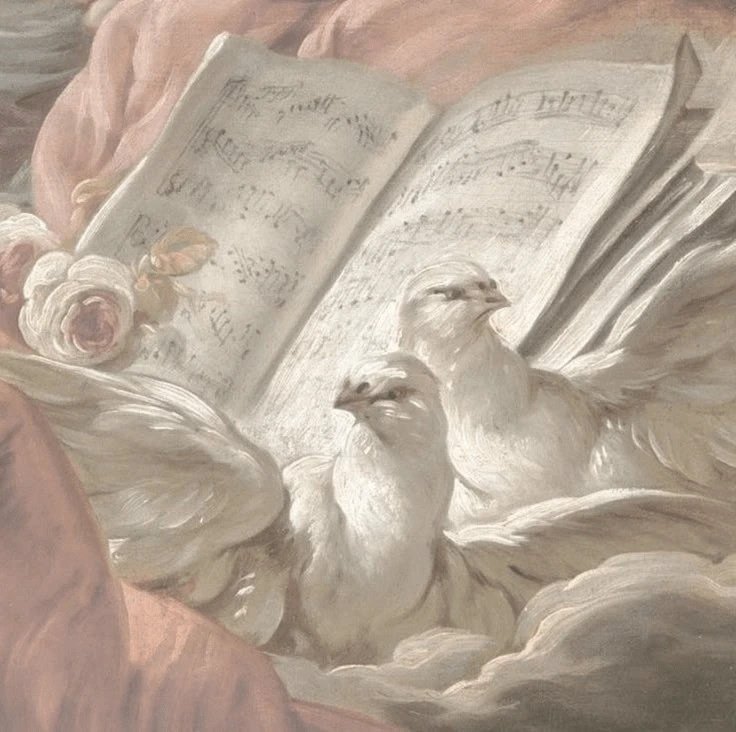
Source: Pinterest
Festivals and Rituals
The worship of Aphrodite held a significant place in ancient Greek religious customs, with devotees honoring the goddess through various festivals and rituals. Among these, the Aphrodisia was a prominent annual celebration observed across numerous Greek city-states. The festival featured elaborate processions, lively dances, and offerings made at Aphrodite's temples, all serving as expressions of gratitude for her blessings and influence over matters of love and desire (kapach).
Another noteworthy occasion was the Adonia festival, dedicated to honoring Aphrodite and her mortal lover, Adonis. The festival that consisted of only women included singing, dancing, and display gardens filled with potted plants, symbolizing the cycle of life, love, and death. In addition to these festivals, couples seeking Aphrodite's divine blessings participated in ,ceremonies at her temples. These rituals involved seeking the goddess's guidance and favor in their unions, underscoring her vital role in fostering love and harmony within relationships (Martell).
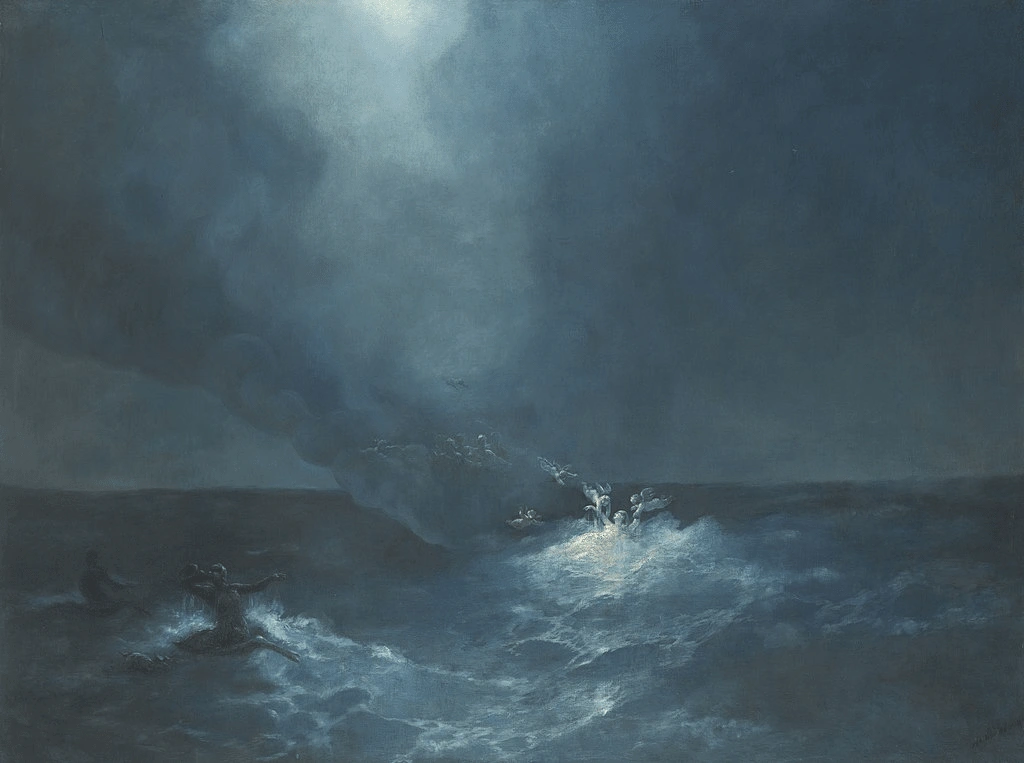
Source: Kosmos Society
Legends associated with Aphrodite
The goddess of desire has long been a source of inspiration and fascination within Greek mythology. From her mythical emergence from the sea to the renowned legend of the Judgment of Paris and her pivotal role in The Tale of Pygmalion and Galatea, she has captivated the minds and hearts of countless generations.
Origin story
One of the most widely accepted tales recounts that the goddess of love was born from the sea foam near the shores of Cyprus. This popular version suggests that the goddess's divine birth resulted from the violent act committed by her grandfather, Cronus, who castrated his father, Uranus, and cast his genitals into the sea. As the sea foam churned and mingled with the blood of Uranus, Aphrodite emerged, radiant and enchanting, serving as a symbol of love and beauty (kapach).
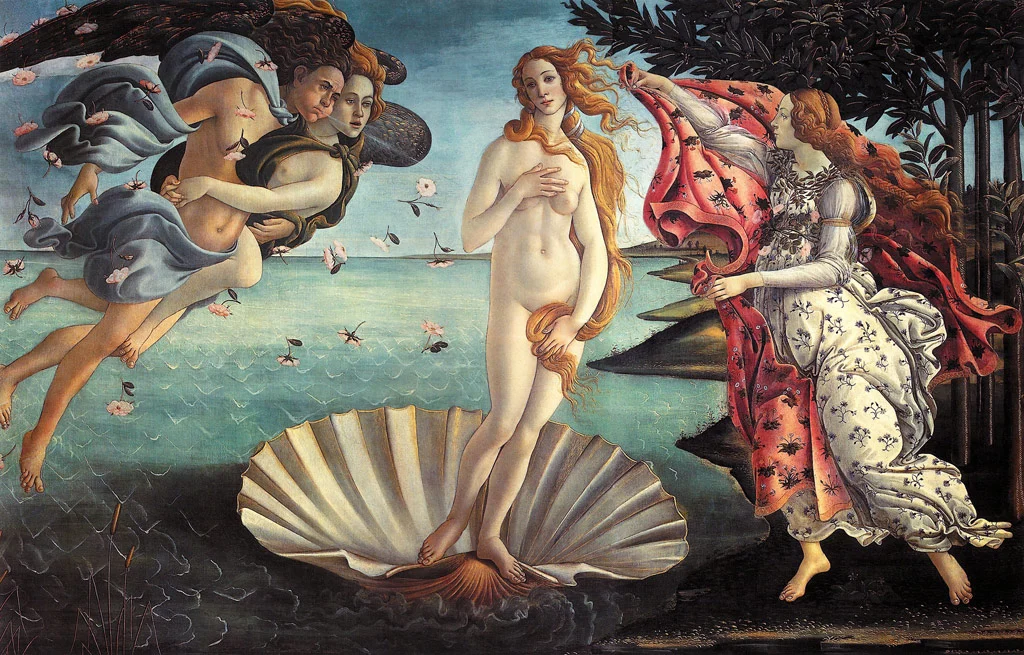
Source: Kosmos Society
The Judgement of Paris
Between the 12th and 13th Centuries somewhere in Greece there was a grand banquet which was attended by three powerful goddesses - Hera, Athena, and Aphrodite. While at the banquet the goddesses fought over a golden apple that bore the inscription "to the fairest" Each claimed the apple for themselves, however unable to resolve the intense rivalry, Zeus, the king of the gods, entrusted the task to the mortal prince of Troy, Paris.
The goddesses, determined to sway Paris's judgment, offered him enticing bribes. Aphrodite, the goddess of love, pledged to him the love of the most beautiful mortal woman, Helen of Sparta. Captivated by the promise of such a prospect, Paris awarded the golden apple to Aphrodite and later kidnapped Helen, which set into motion a series of events that led to the catastrophic Trojan War. It is worth noting that the consequences of Paris's decision extended far beyond the battlefield, affecting the lives and destinies of countless individuals (Cartwright).

Source: Quora
The Tale of Pygmalion and Galatea
The myth of Pygmalion and Galatea began with Pygmalion, a gifted sculptor hailing from Cyprus, who crafted a statue of a woman so exquisitely perfect that he fell deeply in love with her. Driven by his desire to bring his sculpture to life, Pygmalion sought the favor of Aphrodite, offering up prayers and offerings at her temple. The unwavering devotion and the profound love Pygmalion poured into his work moved the goddess of love and she answered his prayers by breathing life into the lifeless figure. Through her miraculous intervention, the statue was transformed into a living, breathing woman whom Pygmalion named Galatea (Wikipedia Contributors).
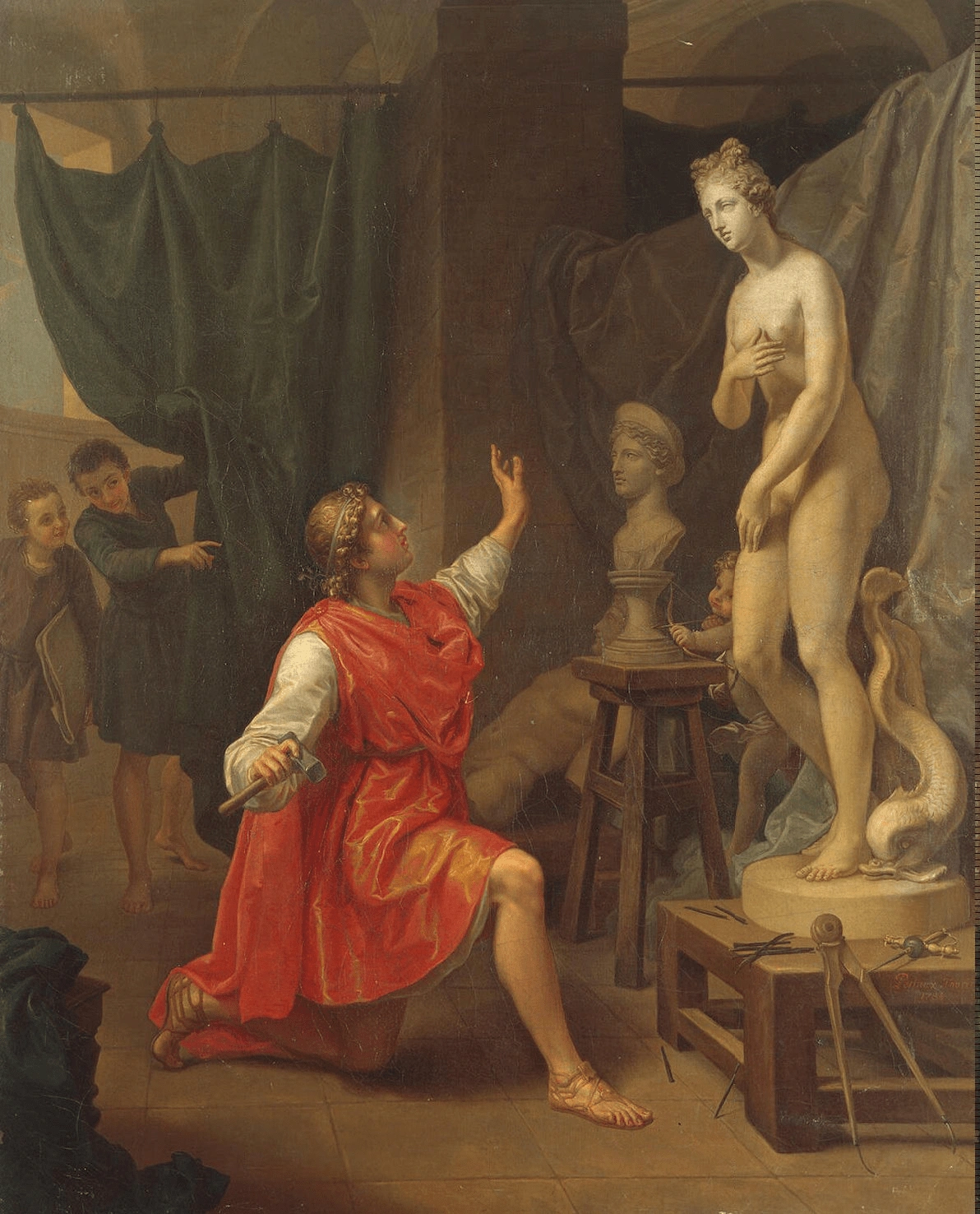
Source: The ESL Workshop
Influences of other religions/cultures on Aphrodite
The worship of Aphrodite was not confined to Greece alone, as her influence extended to various ancient civilizations. If you are familiar with Roman mythology, Aphrodite may sound strikingly similar to the Goddess of the Love and Beauty, Venus. This is because Roman Mythology adopted Greek Mythology as its own (with minor differences here and there), and switched the original Greek names for Latin names. In other words, Aphrodite and Venus are the same, Aphrodite is just the Greek version of Venus.
Final thoughts
The alluring goddess of love and beauty, Aphrodite, has left an indelible mark on Greek mythology and beyond. Her origin story, encompassing a myriad of legends and divine powers, showcases her profound impact on ancient civilizations. Infused and influencing other religions and cultures, Aphrodite’s legacy has expanded, solidifying her position as an enduring and influential historical figure. In the current era, her symbolic significance inspires artists, writers, and thinkers alike, making her an ageless emblem of love’s power and beauty’s transcendent allure.
Works Cited
“Aphrodite | Etymology, Origin and Meaning of the Name Aphrodite by Etymonline.” Www.etymonline.com, www.etymonline.com/word/aphrodite. Accessed 6 Aug. 2023.
Cartwright, Mark. “Aphrodite.” World History Encyclopedia, 24 Oct. 2018, www.worldhistory.org/Aphrodite/.
kapach, avi. “Aphrodite.” Mythopedia, 9 Dec. 2022, mythopedia.com/topics/aphrodite.
Martell, Natasha. “Aphrodite: Ancient Greek Goddess of Love | History Cooperative.” History Cooperative, 24 Mar. 2022, historycooperative.org/aphrodite-greek-goddess-of-love/.
Wikipedia Contributors. “Aphrodite.” Wikipedia, Wikimedia Foundation, 22 Nov. 2018, en.wikipedia.org/wiki/Aphrodite.
—. “More than That (Lauren Jauregui Song).” Wikipedia, Wikimedia Foundation, 29 Mar. 2023, en.wikipedia.org/wiki/More_Than_That_%28Lauren_Jauregui_song%29#. Accessed 6 Aug. 2023.
Eos: The Goddess of Dawn
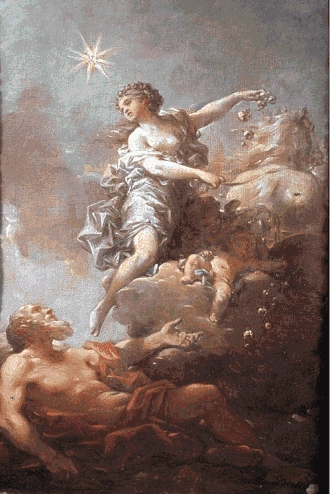
Source: Wikipedia
As the Greek Goddess who bridges the heavenly and earthly realm, the Goddess of Dawn wakes before sunrise to guide the morning sun and bring forth the break of day with the touch of her rose-petaled fingers. Eos comes from a divine lineage of light and sight, and as the Queen of the Heavens and Skies, she stands proudly alongside her siblings who rule over the sun and the moon.
Overview of Eos
Born from the union of the Titan of light, Hyperion, and the Goddess of Sight, Theia, Eos holds a crucial role in the divine order of the cosmos ("Eos") alongside her brother Helios, God of the Sun, and her sister Selene, the Goddess of the Moon.
The name "Eos" can be traced back to the Mycenaean period, approximately between 1100 and 1600 BCE, and means "dawn" in ancient Greek. As the divine force that bids farewell to her sister every night only to usher in the presence of her brother every morning, it is no wonder her name is as such.
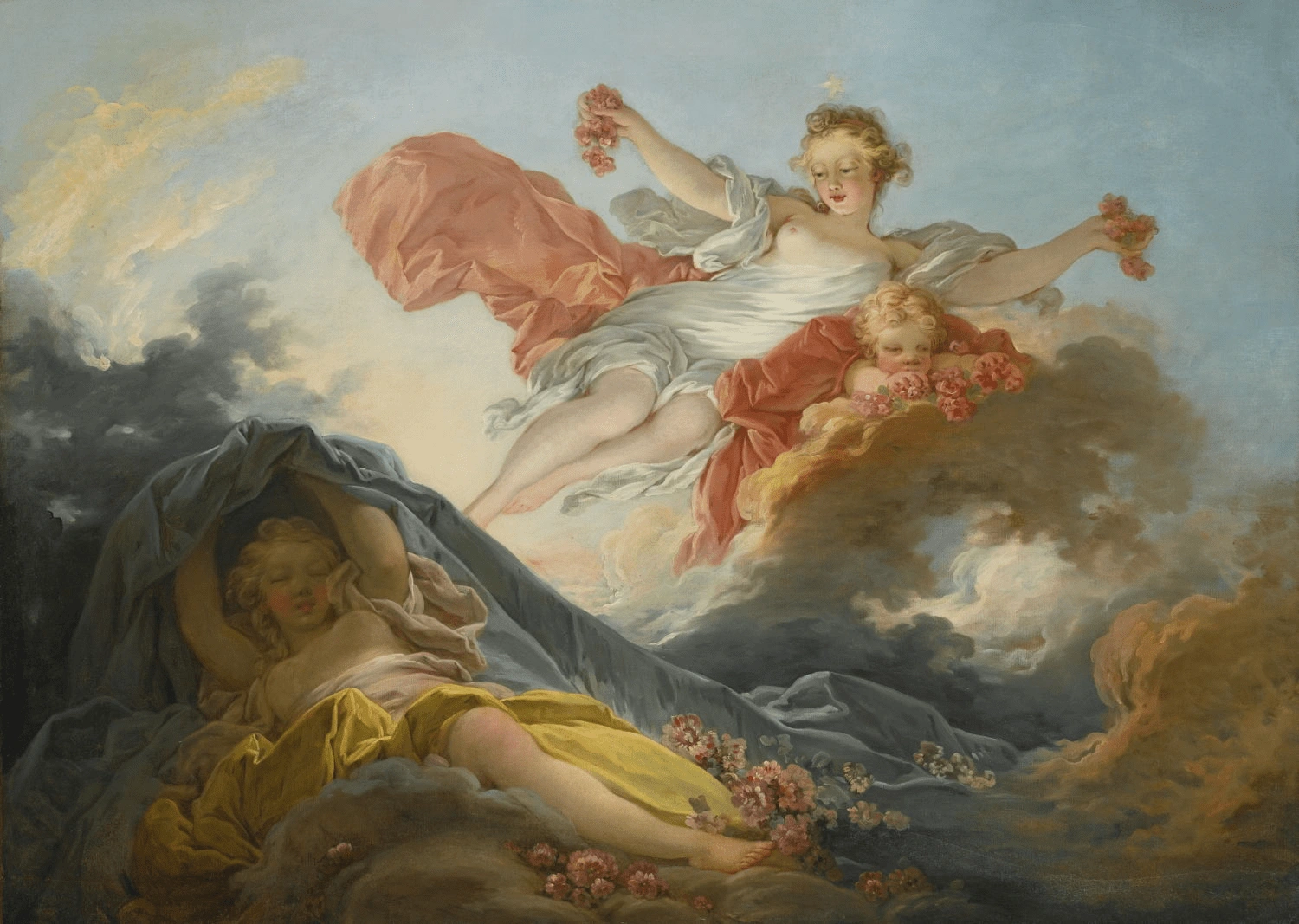
Source: The Eclectic Light Company
Titles
Queen of the Heavens
Rosy-Fingered Dawn
Sky Goddess
Abilities
Eos possesses the ability to awaken the world. As her rosy fingers spread across the horizon, the darkness of night gives way to the early light of morning, and with it, Selene, the Goddess of the moon, can finally rest while Helios, who brings with him the sun, races behind Eos. As Queen of Heavens, Eos is the shift between night and day and the bridge between the sun and the moon.
Characteristics
Whether it is around her or coming from within her, Eos is shrouded in light in most paintings. From the midnight blue of night to the early shades of rose and gold that light up the sky when the sun rises, her flowing robes are always in shades that resemble the sky. In some works of art, cherubs are flying around her, and in other pieces, she is the one depicted with wings; nevertheless, regardless of who has wings in all portrayals of Eos, there is a certain quality that has onlookers feeling as though they are looking at a snapshot of heaven.
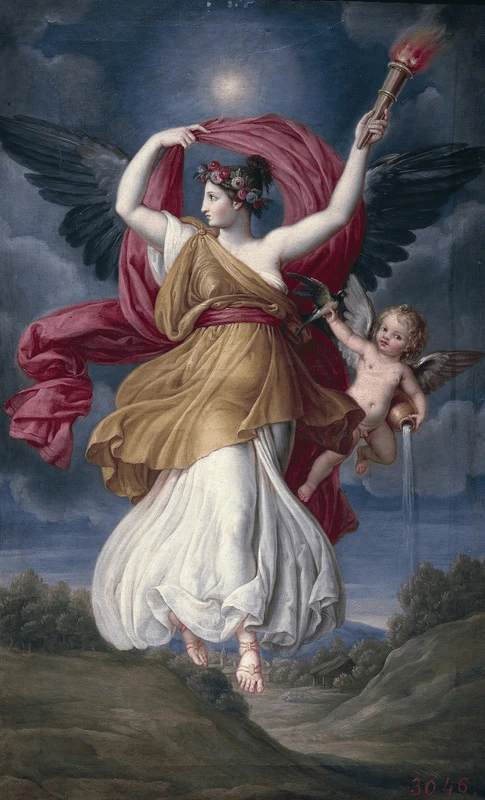
Source: Greek Legends and Myths
Traits
As the bringer of each new day, Eos serves as the harbinger of hope. Her soft and tender nature seems to exude from her; however, despite bringing hope and light to the world, she is also a victim of a curse. A curse given by the goddess of love, Aphrodite, who made it so that Eos had an insatiable lust for mortal men (even though Eos was known for having intimate affairs with gods and mortals alike).
Symbols
Eos's rosy fingers are what she's most known for as many believe it's through her fingers that she can bring forth the dawn and guide the morning light. Another symbol that can also be seen in paintings of the goddess of dawn is her golden chariot which carries her across the sky ("Eos, Greek Goddess of the Dawn"). The golden chariot symbolizes her connection to the heavens and her key role in transitioning the world from night to day.
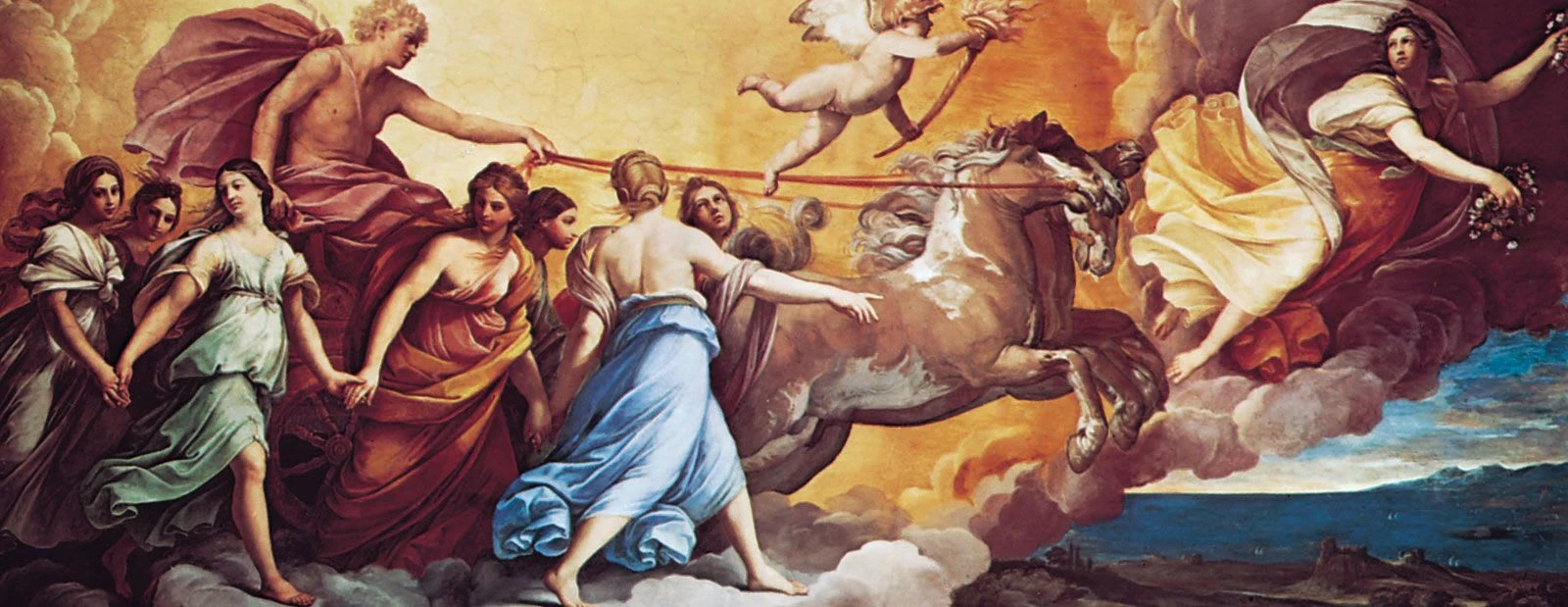
Source: Britannica
Festivals and Rituals
Unlike Aphrodite, who has a festival such as the Aphrodisia festival, or Athena, who is celebrated during Panathenaia, Eos doesn't have a specific festival designated specifically for her. Nonetheless, she is honored in hymns, religious texts, and literature, including Homer and Hesiod, famous works of literature in which the goddess of light is praised for her abilities.
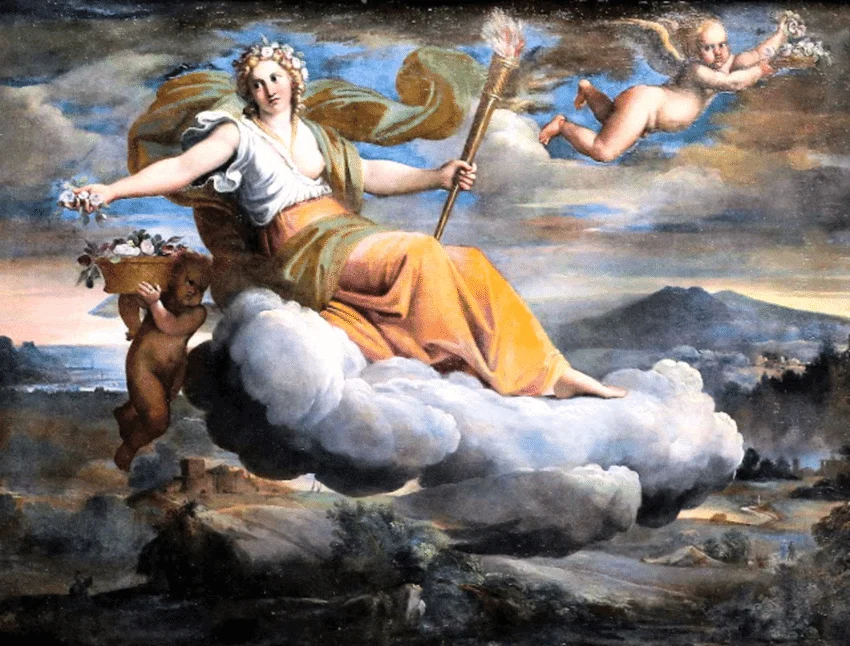
Source: Research Gate
Legends associated with Eos
As the goddess of light, Eos has fascinated and inspired all who adore her. From her birth to her tragic love affairs with Tithonus and Cephalus, Eos is a symbol of hope as much as she is a cautionary tale regarding matters of the heart.
Origin story
Though Eos is a goddess with light-bearing powers, as the daughter of Hyperion, the Titan god of heavenly light, and Theia, the Titanese goddess of sight and clear vision, she has a lineage that dates back to the second generation of gods, the Titans.
The divine birth of Eos, alongside her siblings Helios (God of the Sun), and Selene (Goddess of the Moon) was not only the union of light and sight, but also the conception of night and day and the bridge that brought them together.
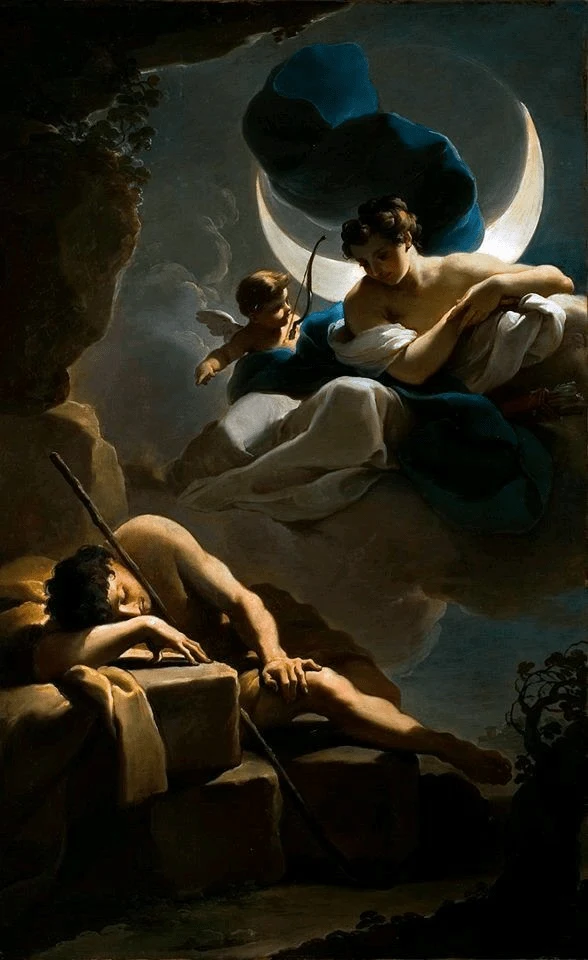
Source: Vpics
The Tragic Tale of Eos and Tithonus: A Story of Immortal Aging
As we have established Eos was cursed with an insatiable love for men, regardless of whether he was a mortal or a god, if he was male and he was handsome he was sure to have the attention of the goddess. Unfortunately, Tithonus, The Prince of Troy, not only caught the eye of the Goddess of Dawn but was so captivatingly beautiful that the goddess could not help herself, so she took him and to ensure he would forever be by her side begged Zeus, the king of gods, to grant Tithonus eternal life ("Eos, Greek Goddess of the Dawn").
However, Eos's fervent plea contained a slight oversight: she forgot to request eternal youth for Tithonus. In other words, though Tithonus was no longer a mortal and would never die, he would continue to age and live in a chamber where he would forever live in an ailing body and a withering mind.
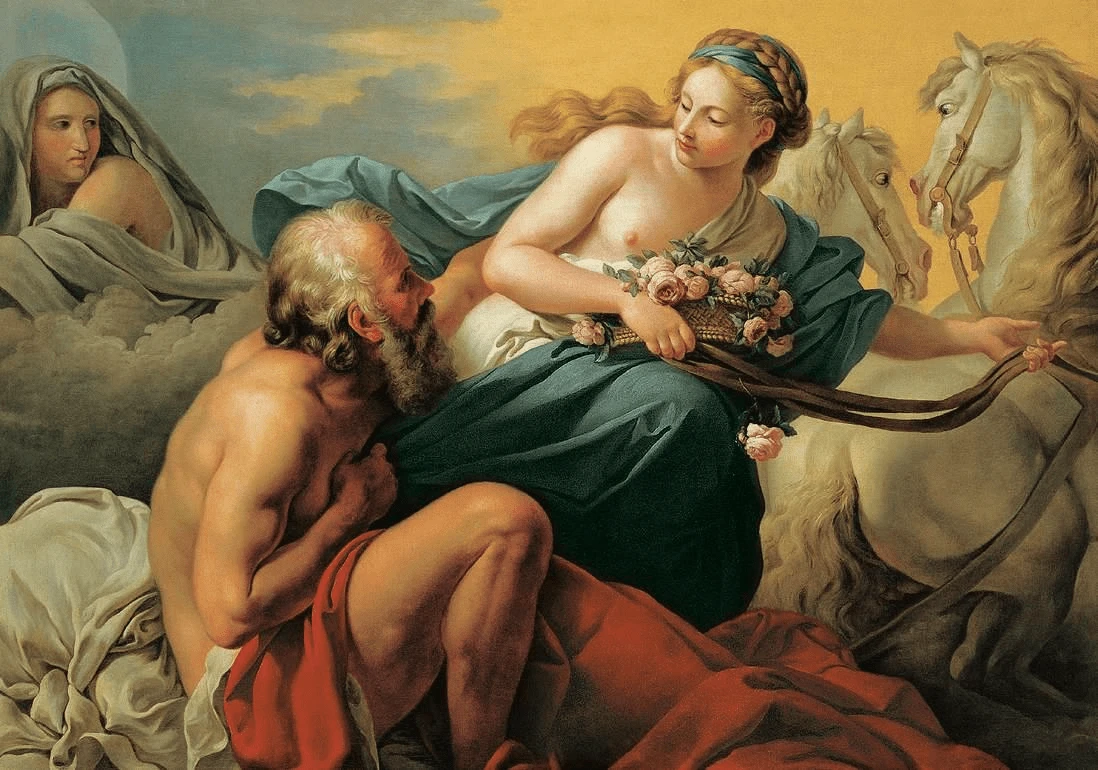
Source: Reflection and Choice
The Death of Procris
Cephalus, the Prince of Athens was another beautiful mortal man who had the misfortune of existing while the Goddess of Dawn was around, which like those before him meant that the harbinger of hope "fell in love with him" and then went on to kidnap him. However, Cephalus who was loyal to his wife, was never swayed by the goddess's promises of immortality and pleasure, so Eos let him go, but not before planting a seed of doubt in his mind about his wife's loyalty.
Acting on mistrust, Cephalus then tested his wife's loyalty by disguising himself, and because Procris hesitated (mind you she did not cheat) he accused her of cheating which shifted the nature of their relationship despite reconciling soon after. However, just as doubt plagued Cephalus it had also made its way into the mind of Procris, so when he left to hunt one day she followed him to see whether or not he was unfaithful. However, mistaking Procris for an enemy Cephalus threw a javelin, striking and killing his wife.

Source: Greek Legends and Myths
Influences of other religions/cultures on Eos
If you are familiar with Roman mythology then Eos may sound striking similar to the Goddess of Dawn, Aurora. This is because Roman Mythology adopted Greek Mythology as its own (with minor differences here and there), and switched the original Greek names for Latin names. In other words, Eos and Aurora are the same, Aurora is just the Roman version of Eos. However, when we move past the Mediterranean and into the East, the Shinto goddess of the sun Amaterasu who is a part of Japanese mythology does share some qualities with Eos.
It is important to remember that there is no evidence that Japanese mythology is inspired by Greek mythology or vice versa, it just happens that gods based around the moon, sun, and sky are found across many mythologies.
Final thoughts
The Goddess Eos is not just a mythological being whom people have sung and prayed to, but also an archetype who is immortalized in classical literature: she reminds us of our infatuation with the transition from night to day. Eos symbolizes the hope we all share at the beginning of something new. Regardless of where we come from and what we believe in despite all that makes us different, we all rise under the same sun, gaze at the same moon, and live under the same sky.
Works Cited
“Eos.” Mythopedia, mythopedia.com/topics/eos.
“Eos, Greek Goddess of the Dawn.” Study.com, 2023, study.com/learn/lesson/eos-greek-goddess-dawn-mythology-facts-family.html.
Miate, Liana. “Eos.” World History Encyclopedia, www.worldhistory.org/Eos/.
Wikipedia Contributors. “Eos.” Wikipedia, Wikimedia Foundation, 29 Mar. 2019, en.wikipedia.org/wiki/Eos.
Selene: Goddess of the Moon

Source: Gods and Foolish Grandeur
As the sun rests, Selene rules over the night sky watching over the world as it sleeps. On her silver chariot, she rides amongst the stars leading the moon across the universe. All the light that shines in the dark emanates from the Greek Goddess of the Moon, from the stars that twinkle at night to the moon that adorns the evening sky.
Overview of Selene
The name Selene comes from the Greek term "selas," which can mean light or brightness (“SELENE - Greek Goddess of the Moon (Roman Luna)”), and as the light bearer who guides and shines down upon all those who come alive at night, one can see why the name fits her so beautifully. Similar to her siblings Eos (the goddess of dawn) and Helios (god of the sun), Selene also comes from the divine lineage of the titans Hyperion and Theia.
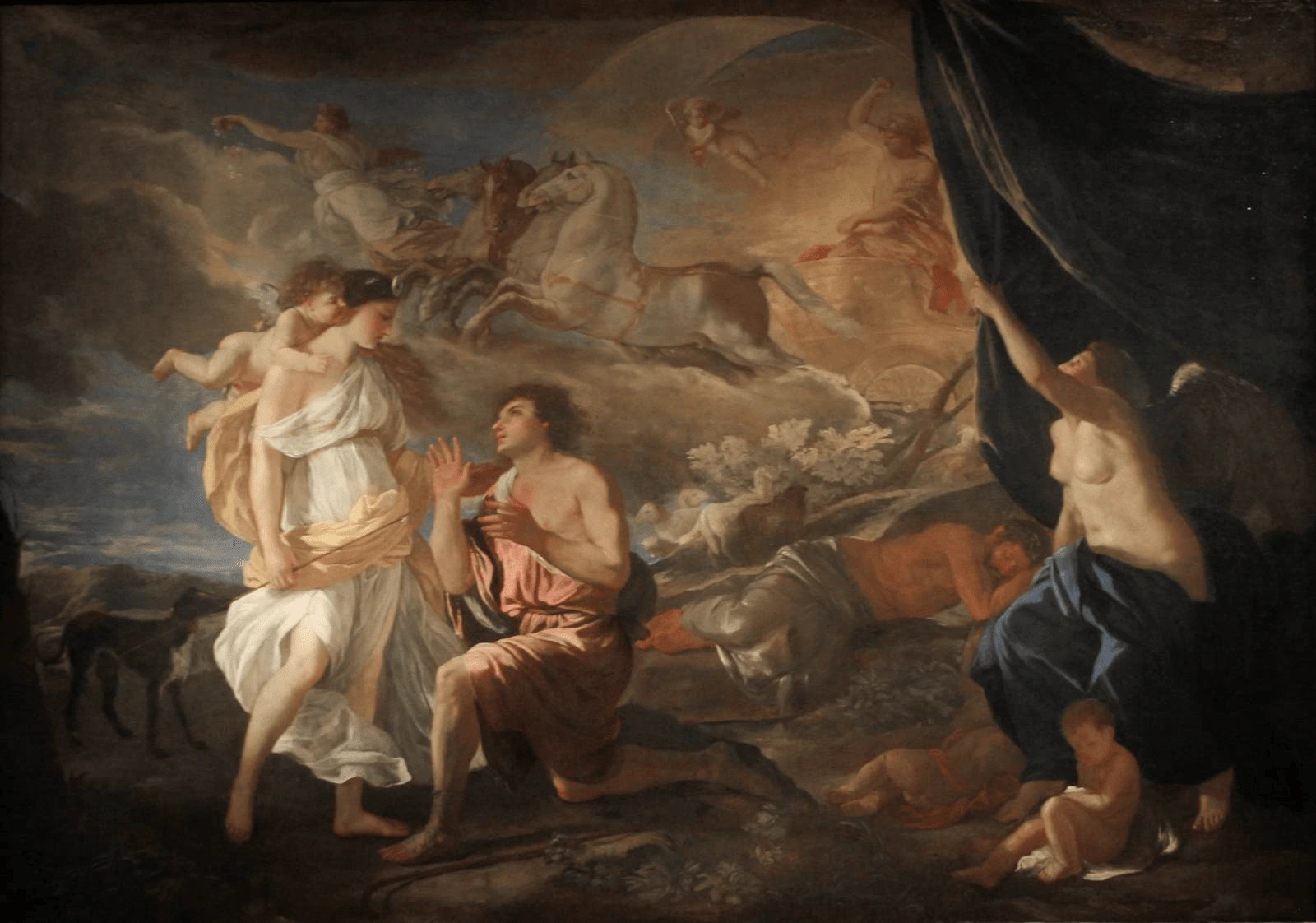
Source: Web Gallery of Art
Titles
Mother of Dreams
Queen of the Night
Light Bearer
Abilities
Selene serves as a guiding beacon to all who wander and wake in the dead of the night. However, as the light bearer, she also has a deep connection with the moon which she leads along the universe on her chariot through all its phases. The ever-shifting phases of the moon, over which she presides, serve as a celestial calendar, marking the passage of months and seasons (Dhar).
Characteristics
With moonlit skin and hair that shimmers and flows, Selene's beauty is as mysterious as it is radiant. In most paintings, she is nude, but in others, if you pay close attention you can see that she is wearing a transparent gown that glimmers like moonlight dancing upon the sea. As an ethereal goddess, Selene is of exceptional beauty and often leaves all who gaze upon her in awe and enchantment.
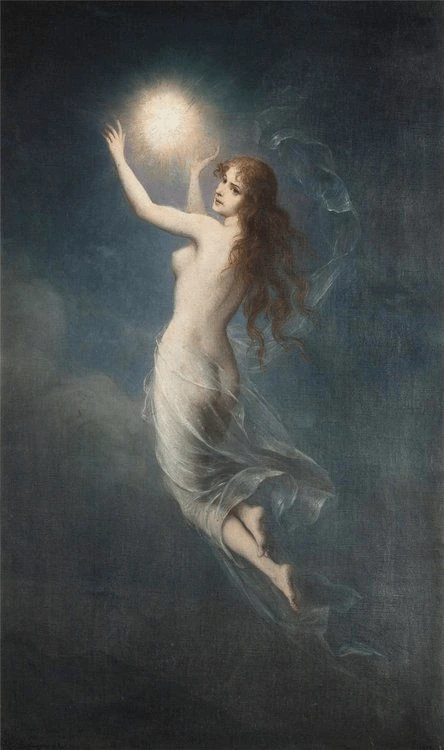
Source: Pinterest
Traits
Selene has a constellation of qualities that reflect her affinity with the moon. Much like the hidden side of the moon which we don't see, Selene has an aura of mystery that invites curiosity (“SELENE - Greek Goddess of the Moon (Roman Luna)”), as she is often perceived as a goddess who is reserved and independent. Her role as a guardian of the night highlights her freedom, guiding and protecting those who find themselves under her luminous gaze (“Selene”) and providing consolation to all those who cannot rest.
Symbols
As the goddess of the moon, it's not a surprise that the symbol she is most associated with is the moon, as it represents not only as represents her luminous presence in the night sky, but also her control over the lunar cycles. Leading the moon across the night sky, the silver chariot drawn by horses and oxen is another symbol connected with Selene as it represents her role as a goddess who marks the silent hours with graceful strength.
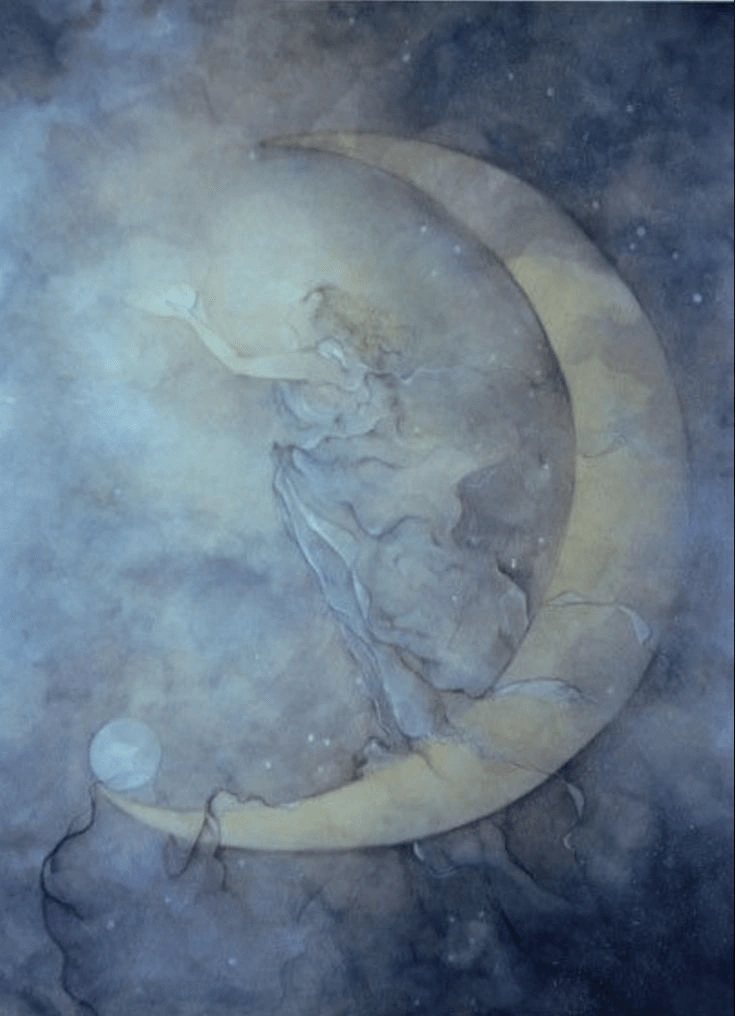
Source: Pinterest
Festivals and Rituals
Held during the full moon the Seleneia Festival, took place either in the city of Elis (where the Olympic Games took place) or in Boeotia. Though much is not known about the festival because of lack of historical documentation scholars assume that devotees would sacrifice animals to honor Selene's role as the Goddess of the Moon. However, as mentioned above the different phases of the moon served as a calendar for people at the time marking the passage of time, so it's possible that during full moon observances, some may have also prayed to Selene as she was the goddess of the moon.
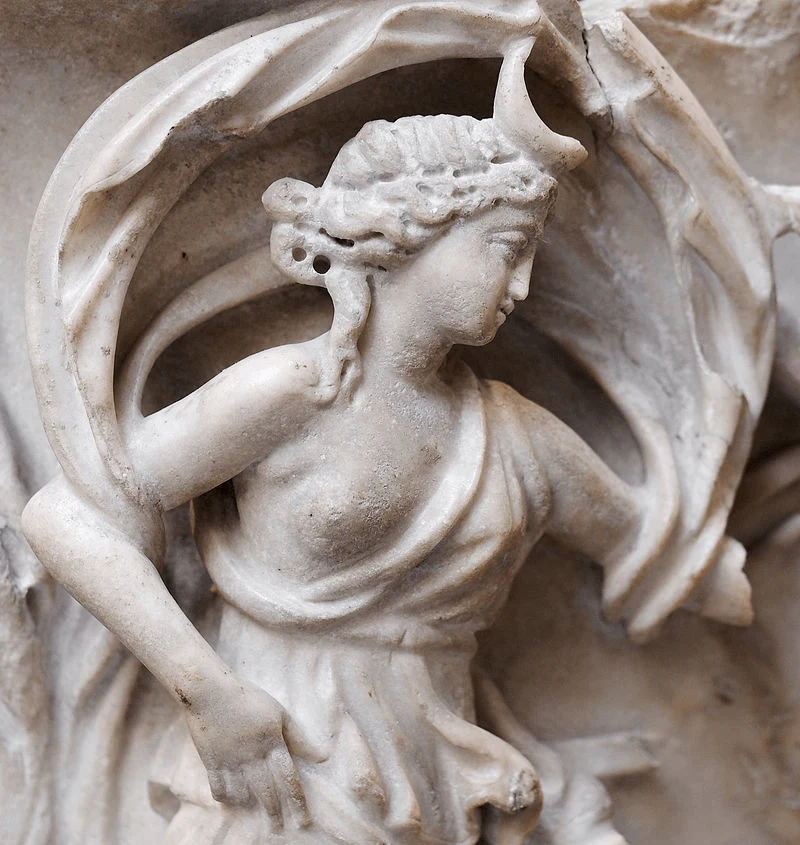
Source: Wikipedia
Legends associated with Selene
From her divine lineage to falling in love with the mortal Endymion Selene has undeniably etched her presence into the collective imagination.
Origin story
As Goddess of the Moon, Selene has authority over the moon, guides the tides, and watches over all those who sleep and wake at night. Regardless, beyond her powers as a goddess, it's important to remember that as the daughter of Hyperion, the Titan god of heavenly light, and Theia, the Titanese goddess of sight and clear vision, she has a lineage that dates back to the second generation of gods, the Titans.
According to Hesiod’s Theogony and a few other ancient sources, Selene alongside her siblings, Eos (the goddess of dawn) and Helios (the god of the sun) were born from the union of light and sight. As a result, all three children have dominion over light in some capacity and Selene alongside her siblings work together to sustain the delicate balance of the sky.
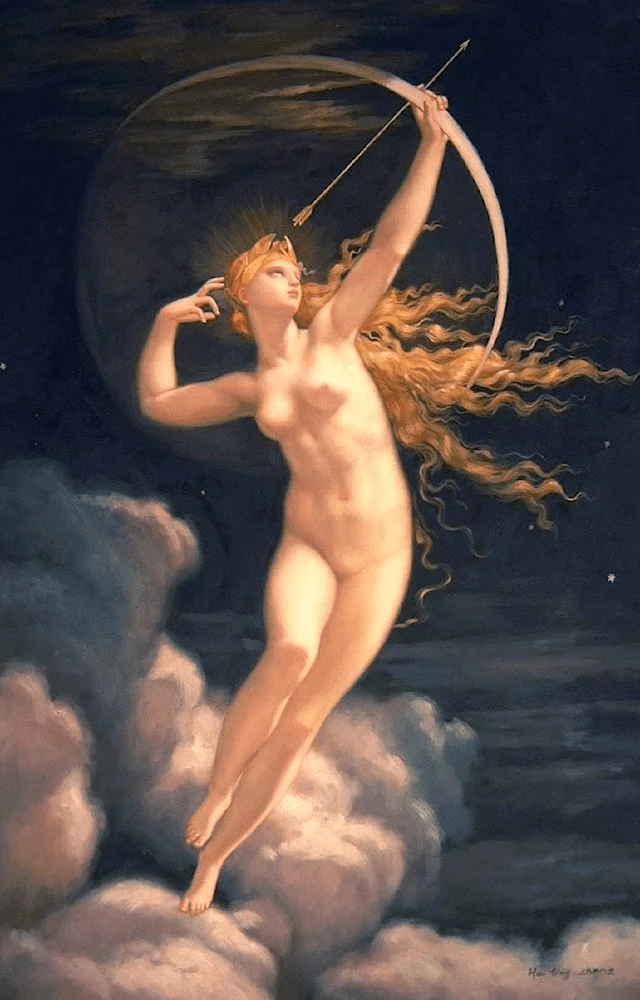
Source: Art Renewal Center
Selene and Endymion: A Moonlit Romance
One of Selene's most well-known legends involves her love for Endymion, a handsome man who was either a shepherd or an astronomer. Nonetheless, regardless of his profession Endymion was said to be the first human to observe the moon as he was infatuated with its guardian goddess, Selene. Selene just as enchanted by Endymion's slumbering form ascended from the heavens every night to catch a closer glimpse of him.
The goddess of the moon was so entranced by how beautiful Endymion looked when he slept that she asked Zeus to grant Endymion everlasting youth and eternal sleep. Granting Selene's wish Zeus put Endymion into eternal sleep. From then on, every night, Selene visited Endymion while he slept, and by him had fifty daughters (“Endymion (Mythology)”).
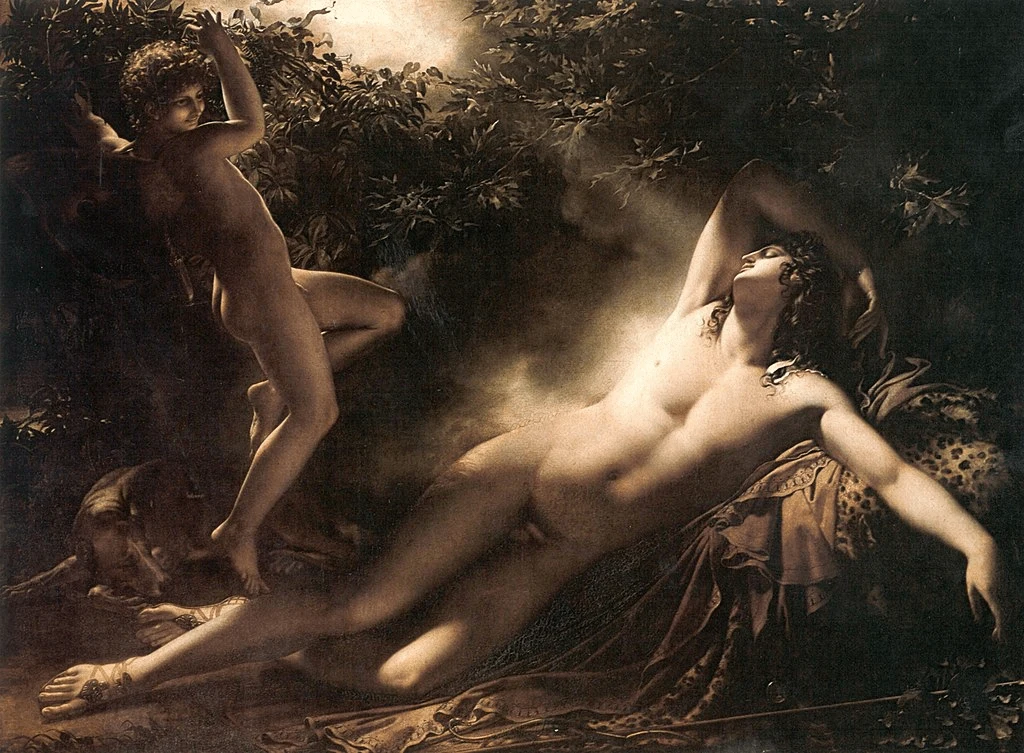
Source: Wikipedia
Influences of other religions/cultures on Selene
If you are familiar with Roman mythology, Selene may sound strikingly similar to the Goddess of the Moon, Luna. This is because Roman Mythology adopted Greek Mythology as its own (with minor differences here and there), and switched the original Greek names for Latin names. In other words, Selene and Luna are the same, Selene is just the Roman version of Luna.
However, deities centered around the moon are not found only within Greek and Roman mythologies. The Egyptian goddess Isis is closely linked to the moon's cycles and in Norse Mythology the male god Mani personifies the moon's influence.
Final thoughts
From leading the moon on a silver chariot across the sky to guiding the tides down below - the goddess of the moon marks the passage of time while maintaining the serene rhythm of the sea. As a prominent figure in the Greek pantheon, Selene's light continues to inspire human creativity and fascination.
Works Cited
Dhar, Rittika. “Selene: The Titan and Greek Goddess of the Moon.” History Cooperative, 20 Sept. 2022, https://historycooperative.org/selene-greek-goddess-of-the-moon/.
Miate, Liana. “Selene.” World History Encyclopedia, 23 Jan. 2023, https://www.worldhistory.org/Selene/.
“Selene.” Mythopedia, https://mythopedia.com/topics/selene.
“SELENE – Greek Goddess of the Moon (Roman Luna).” Theoi Greek Mythology, 2000, https://www.theoi.com/Titan/Selene.html.
“Selene.” Wikipedia, Wikimedia Foundation, 30 Jan. 2019, https://en.wikipedia.org/wiki/Selene.
“Endymion (Mythology).” Wikipedia, Wikimedia Foundation, https://en.wikipedia.org/wiki/Endymion_(mythology).
Nyx: Goddess of the Night
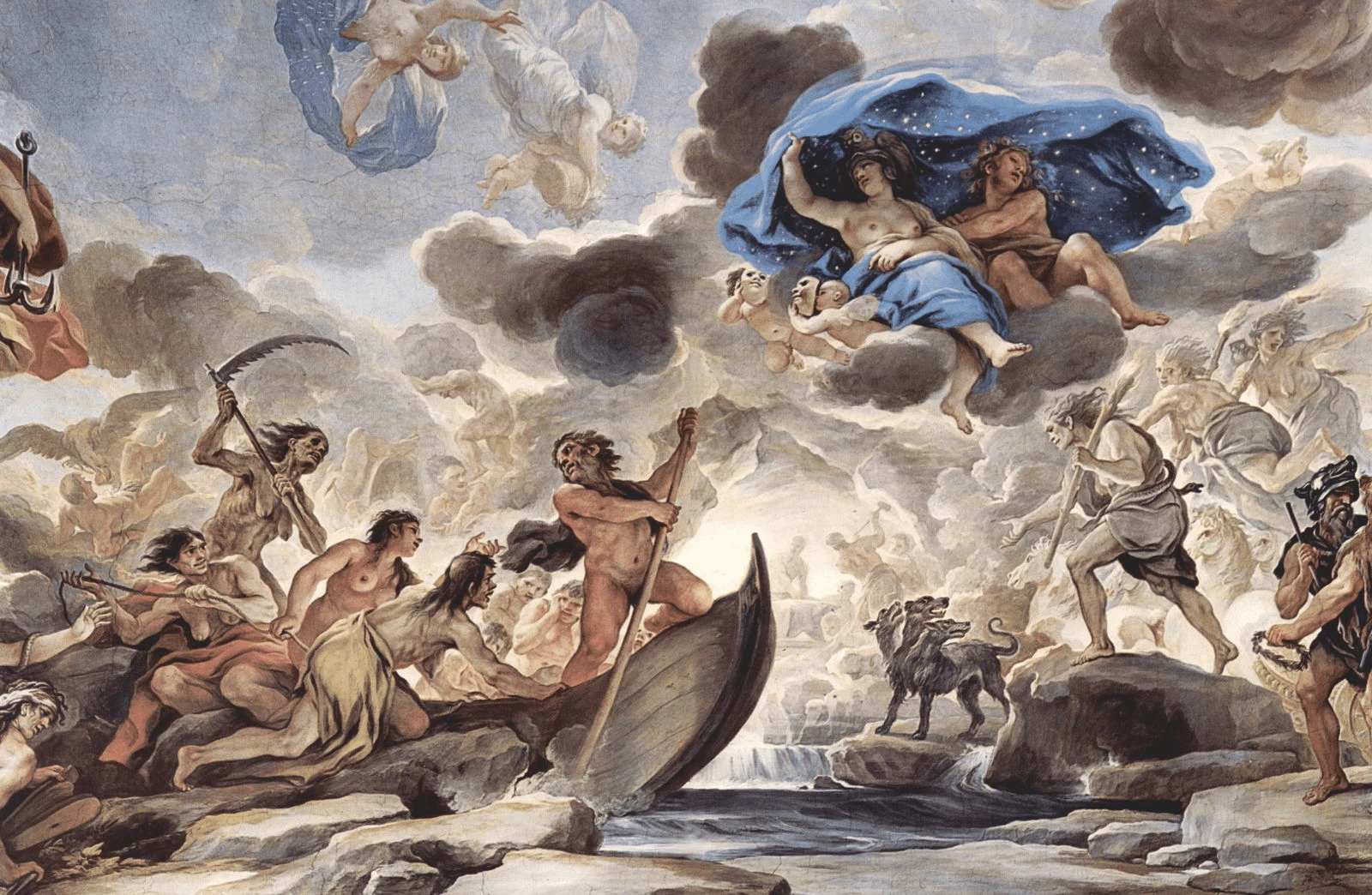
Source: The Eclectic Light Company
For centuries, the enigmatic and powerful Greek goddess Nyx has been the subject of fascination among ancient and modern minds alike. Her enchanting presence and intriguing mythology have made her a deity of great significance whose influence extends beyond the nightly realm. Her unique abilities, characteristics, and symbolism can be found woven throughout Greek mythology, making her one of the most compelling figures in the pantheon of gods and goddesses.
Overview of Nyx
The goddess Nyx, also known as Nox in Roman mythology, is considered the embodiment of the night and a primordial force that transcends even the divine pantheon of Mount Olympus. Her origins are veiled in obscurity, rendering her one of the most ancient entities in Greek cosmogony. The very etymology of her name underscores her essence, as “Nyx” finds its roots in the Greek word “nykt-” or “νύκτ-,” which directly translates to “night” (Tolentino). Despite her enigmatic presence in Greek mythology, Nyx holds a pivotal role as a potent and indispensable force that operates in the background, stealthily weaving her dominion over the nightly realm for gods and mortals alike. Her overarching influence remains undeniable, even though she seldom takes center stage. As such, Nyx stands as a testament to the enduring power of the night, a celestial force that predates even the mightiest of Olympian deities.

Source: The Eclectic Light Company
Titles
Mistress of Shadows
Protector of Dreams
Goddess of Darkness
Abilities
Among Nyx’s most remarkable powers is her mastery of Darkness Manipulation, which allows her to exert absolute control over the veil of darkness that enshrouds the world during the night (“Nyx”). With this power, Nyx can conceal secrets and foster an aura of mystery that permeates the dead of night. In addition to this, she also wields an awe-inspiring mastery of control over dreams, enabling her to influence and shape the dreams of mortals and immortals, granting or withholding visions of the future (“Nyx Overview, Mythology & Facts | Greek Goddess of the Night”). This control over the dream realm further establishes her as a formidable deity capable of shaping human destiny.
Moreover, Nyx’s connection to the night endows her with the ability of precognition, enabling her to have glimpses into the future. This extraordinary insight into what lies ahead makes her a potent force in determining the fates of both gods and mortals. What’s more, her invulnerability to the sun’s influence solidifies her dominion over the nocturnal realm, emphasizing her enduring and formidable presence in Greek mythology (Tolentino).
Characteristics
Nyx, the very embodiment of the night, has fascinated mythologists and poets for generations. Although ancient texts provide scant detail regarding her physical appearance, she is often portrayed as a shadowy figure draped in the cloak of darkness, shrouding her in an elusive aura (Tolentino). Her infrequent direct appearances in myths further contribute to her mysterious nature, leaving much to the imagination of those who seek to fathom her essence.
Despite lacking detailed descriptions, Nyx’s presence evokes emotions that oscillate between tranquility and foreboding. This duality reflects the night’s dichotomy, where serenity coexists with the unknown and the mysterious. As such, Nyx’s enigmatic nature embodies the complex interplay of emotions and experiences that the night brings to the mortal and divine realms, rendering her a captivating and intriguing figure in Greek mythology.

Source: The Eclectic Light Company
Traits
Nyx is a complex figure in Greek mythology, known for her enigmatic personality traits as mysterious as the night she represents. One of her most notable attributes is her maternal side, as she is revered as the mother of various personifications of night and darkness, such as Hypnos (Sleep) and Thanatos (Death). Nyx’s caring and protective nature is evident in this maternal role, as she oversees these fundamental aspects of existence with a watchful eye (“Nyx”).
Despite her maternal side, Nyx is also known for her mysterious aura that veils her true nature from mortals and divinities. She tends to shroud herself in secrecy, revealing her depths only when it serves her purpose (“Nyx Overview, Mythology & Facts | Greek Goddess of the Night”). This enigmatic aspect of her character adds to her intrigue, keeping those who encounter her perpetually intrigued. Additionally, Nyx is often perceived as indifferent to the plight of mortals, emphasizing her role as an impartial and transcendent force in the cosmos (“Nyx”). This detachment highlights her status as a deity whose influence extends far beyond the mortal realm, adding complexity to her character in the pantheon of Greek gods and goddesses.
Symbols
Nyx’s symbolism intricately weaves together the very essence of night and the profound mysteries it conceals. The nocturnal creatures, such as owls and other night-dwelling animals, represent her authority over the shadowy hours (Tolentino), serving as her earthly emissaries. The celestial heavens, adorned with countless stars, symbolize Nyx’s divine power, mirroring the expanse of her dominion over the nocturnal realm. As a symbol of the lunar cycle, the crescent moon subtly alludes to her role in the nightly progression of time (“Nyx Overview, Mythology & Facts | Greek Goddess of the Night”), marking the cyclical nature of darkness and the mysteries it unfolds. Nyx’s symbolism is a profound testament to her enduring influence over the cosmos and the secrets concealed within the night.

Source: Jenikir by History
Festivals and Rituals
The influence of Nyx may not be immediately apparent in many Greek festivals and rituals, yet it subtly permeates various nightly celebrations and practices throughout Greek culture. An example of this influence can be found in the Eleusinian Mysteries, a prominent ancient Greek religious event dedicated primarily to Demeter and Persephone. Although the focus is on these goddesses, the Eleusinian Mysteries also featured nighttime rituals. Initiates would participate in solemn nighttime processions, symbolizing the return of light after the darkness of the night (Tolentino).

Source: The Eclectic Light Company
Legends associated with Nyx
The mythology of ancient Greece holds a vast array of captivating stories and characters, among which Nyx, the goddess of night, takes a prominent place. Shrouded in different interpretations and narratives, her origin story sheds light on her complex and intriguing character and highlights her undeniable significance among the pantheon of Greek deities.
Origin story
The origins of Nyx present an intriguing divergence in various sources, highlighting the complexity and fluidity of Greek mythology. In Hesiod’s “Theogony,” Nyx emerges as a significant cosmic figure at the beginning of creation. She personifies the primordial darkness that existed before all other deities, including the mighty Titans and the Olympian gods. This account portrays Nyx as self-generated, bearing no conventional parentage. Nyx’s embodiment of the cosmic night conveys the timeless and boundless essence of darkness, setting the stage for the unfolding drama of the Greek pantheon (“Nyx”).
On the other hand, in another version of her origin, Nyx is depicted as one of the offspring of Chaos, alongside Erebus (Darkness), Aether (Light), and Hemera (Day). This variant accentuates her connection to Chaos, underscoring her role as a fundamental force that predates even the most prominent deities of Mount Olympus. Nyx’s association with Chaos emphasizes her status as an ancient and enduring cosmic entity wielding influence over the celestial order (Tolentino). These divergent origin stories deepen the enigmatic allure of Nyx.
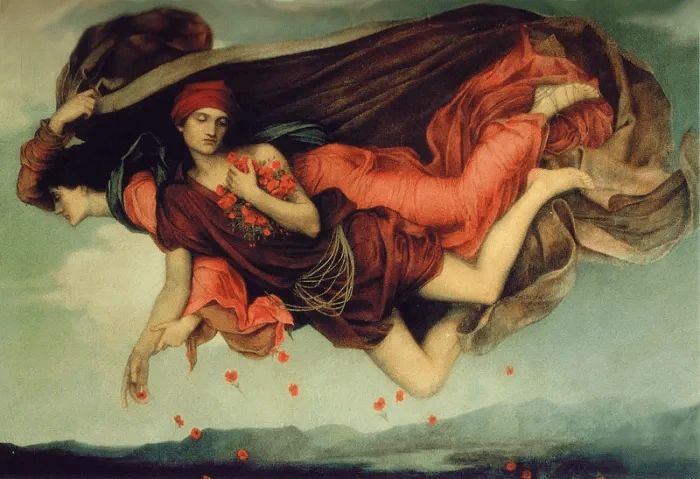
Source: The Eclectic Light Company
The Mother of Sleep and Death
A prominent legend closely linked to Nyx portrays her as the mother of Hypnos (Sleep) and Thanatos (Death), exemplifying her intricate role in the fabric of existence. In this compelling narrative, Nyx’s divine offspring personify the inherent aspects of the night, where sleep and death are intricately intertwined. Hypnos, the embodiment of soothing slumber, is often depicted as a gentle deity responsible for lulling gods and mortals into restful repose. His tranquil influence brings solace to weary souls, underlining the nurturing aspect of Nyx as a motherly figure (“Nyx”).
Conversely, Thanatos embodies the relentless force of death, shouldering the solemn responsibility of guiding departed souls to the afterlife. He represents the ultimate conclusion of mortal existence, emphasizing the inevitability of death within the grand scheme of life. This legend serves as a poignant reminder of Nyx’s connection to the natural order, where life and death are intrinsically bound, and she presides over the enigmatic realm that bridges the two (“Nyx”). Nyx’s role as the mother of these contrasting deities underscores her multifaceted presence in Greek mythology, where she symbolizes both the nurturing and the inevitable aspects of existence.
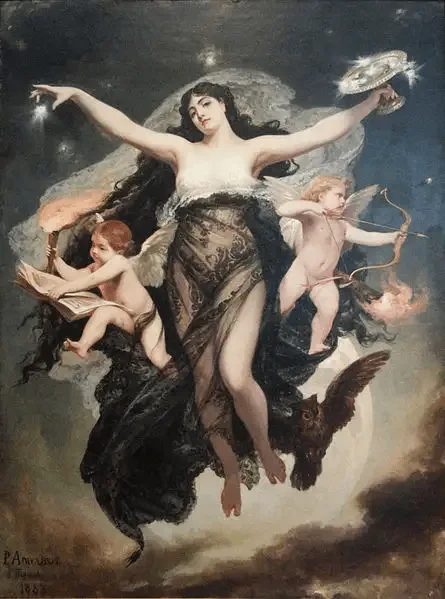
Source: Hub Pages
Safeguarding Zeus' Thunderbolt
The legend of Nyx's involvement in safeguarding Zeus' thunderbolt is a tale highlighting her significance in matters of divine importance and the celestial hierarchy. As the goddess of the night, Nyx has an intimate connection to the mysterious depths of darkness and possesses formidable influence. In this story, Zeus recognizes the need to protect his potent symbol of divine authority and power from potential theft or misuse and turns to Nyx for assistance. With her willingness to play a pivotal role in preserving the balance of power among the gods, Nyx agrees to conceal the thunderbolt securely deep within Tartarus's dark and forbidding confines, a realm intricately associated with the underworld (“Nyx Overview, Mythology & Facts | Greek Goddess of the Night”). This legend showcases Nyx's reach that extends far beyond the nocturnal realm, underscoring her importance in matters of divine significance.

Source: The Eclectic Light Company
Influences of other religions/cultures on Nyx
The character and attributes of Nyx extend beyond the realm of Greek mythology. As the personification of night, her concept shares similarities with deities in other cultures. For instance, the Egyptian goddess Nut, who represents the sky and the night, embodies the vast expanse of her respective domain and the mysteries concealed within the night, much like Nyx. Moreover, the Roman goddess Nox, Nyx's counterpart, exemplifies the cross-cultural appeal of the goddess of night, transcending Greek and Roman religious contexts (“Nyx”).
Modern appearances
Throughout the ages, Nyx has remained a prominent figure, albeit in various forms. Her enduring presence has inspired countless literature, art, and popular culture works. In literature, her name frequently appears in fantasy novels, evoking the mystical and enigmatic qualities of the night. In the renowned young adult fantasy series House of Night, Nyx is the primordial vampire goddess who bestows the protagonist, Zoey Redbird, with distinct powers. In visual arts, Nyx's symbolism is often depicted in paintings and sculptures that explore the interplay between darkness and light.
Final thoughts
Nyx, the Greek goddess of the night, is a profound figure in Greek mythology. Her legends and origin story shed light on her pivotal role as a primordial force, encapsulating the essence of darkness and the arcane secrets hidden within the cover of night. Whether assuming the mantle of a nurturing protector, a guardian of divine treasures, or a cosmic presence, Nyx's influence resonates deeply within Greek mythology and maintains an enduring fascination for contemporary audiences. Her timeless allure lies in her capacity to encapsulate the night's intricacies and the unfathomable perpetual magnetism. In all her mysterious glory, Nyx remains a symbol of the enduring power and enigma of the night, leaving an indelible mark on the Greek mythological tradition.
References
“Nyx.” Wikipedia, 20 Oct. 2020, en.wikipedia.org/wiki/Nyx.
“Nyx.” Mythopedia, mythopedia.com/topics/nyx.
“Nyx Overview, Mythology & Facts | Greek Goddess of the Night.” Study.com, 2023, study.com/academy/lesson/nyx-overview-mythology-facts.html.
Tolentino, Cierra. “Nyx: Greek Goddess of the Night | History Cooperative.” History Cooperative, 19 Aug. 2022, historycooperative.org/nyx-goddess-of-the-night/.
Athena: Goddess of Wisdom, Craft, and Warfare
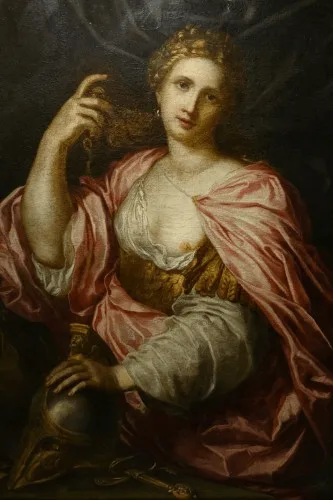
Source: Antic Store
In ancient mythology, Athena is widely regarded as a legendary figure who embodies exceptional wisdom, unwavering courage, and unparalleled strategic prowess. As a highly esteemed and prominent goddess within Greek mythology, Athena has captivated the imagination of countless generations with her multifaceted persona and commanding presence. Her unparalleled intellect, strategic acumen, and unwavering resolve have made her an icon of strength and wisdom, inspiring countless individuals to strive for greatness and achieve their full potential. Athena's impact on mythology and culture is nothing short of extraordinary, and her legacy continues to endure.
Overview of Athena
Athena, also known as Pallas Athena, held a significant position among the twelve Olympian gods and goddesses, earning reverence as the offspring of Zeus, the most eminent deity in the celestial hierarchy. Her mythos endures as a symbol of wisdom, bravery, martial insight, and advancing human civilization. The name Athena, derived from the Greek term "athēnē," finds linguistic resonance with the ancient Greek verb "aēr," which encompasses the idea of understanding, particularly in grasping the essence of a subject (Kapach). Her extensive influence spanned many domains, establishing her as a symbol of astute judgment and artistic mastery in Greek mythology.
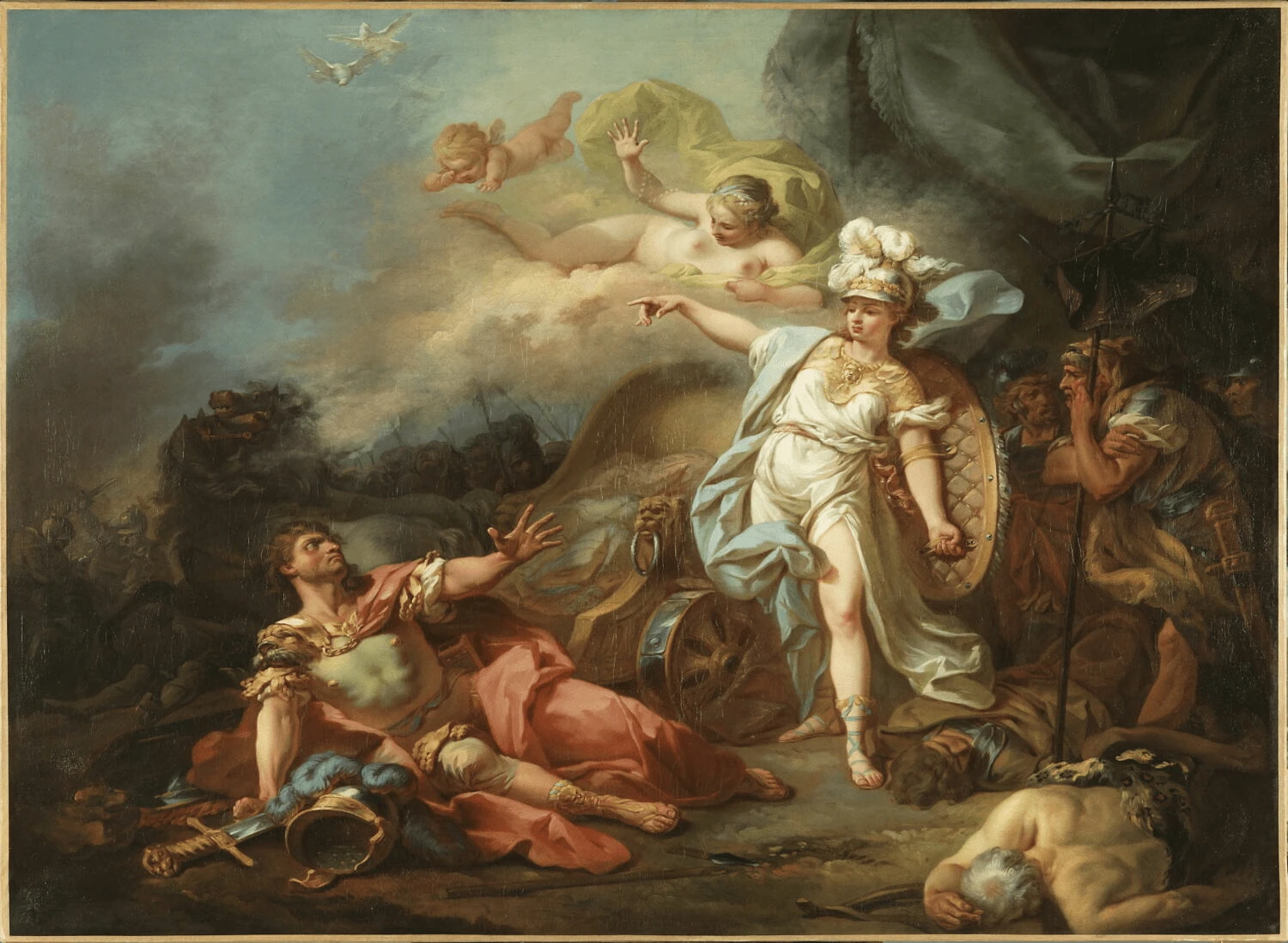
Source: Daily Art Magazine
Titles
Athena Parthenos
Pallas
Promachos
Ergane
Abilities
Athena's diverse repertoire of abilities emanated from the multifaceted essence of her divine persona, with each facet highlighting a distinctive aspect of her being. Her unparalleled wisdom and sagacity earned her reverence as the embodiment of knowledge (Atsma). This intellectual understanding was tangibly mirrored in her strategic brilliance in warfare, exemplified in her guidance of esteemed heroes like Odysseus during the tumultuous Trojan War (Kapach).
However, Athena's prowess extended beyond the realm of battle. Her artistic talents shone in weaving, showcasing her ability to excel in strategic and creative pursuits (Cartwright). Moreover, Athena's ingenuity became evident in the creation of the olive tree, an iconic symbol of prosperity and sustenance bestowed upon Athens. This manifestation of inventive genius underscores her diverse influence, encapsulating her character's strategic and nurturing dimensions (Atsma).
Characteristics
The physical attributes of Athena were a profound reflection of her persona, which was defined by a complex amalgamation of strength and grace. She was revered as a commanding figure, with a stature often described as tall and imposing, as depicted in classical artwork. This portrayal, highlighted by her iconic armor, stood as a symbolic testament to her prowess in martial pursuits (Atsma).
The intensity of Athena's character was mirrored in her steely gray eyes, which bore the weight of her wisdom and acumen and stood as a testament to her sagacity. Her confident demeanor projected an aura of self-assuredness and composure, further emphasizing her authority and poise. This harmonious blend of attributes seamlessly matched her warrior and sagacious counselor roles.
Indeed, Athena's entire presence exuded an undeniable air of authority and astuteness, aptly befitting her multifaceted responsibilities. This amalgamation of attributes solidified her esteemed status and physically embodied the strategic brilliance and sagacious discernment that defined her essence.
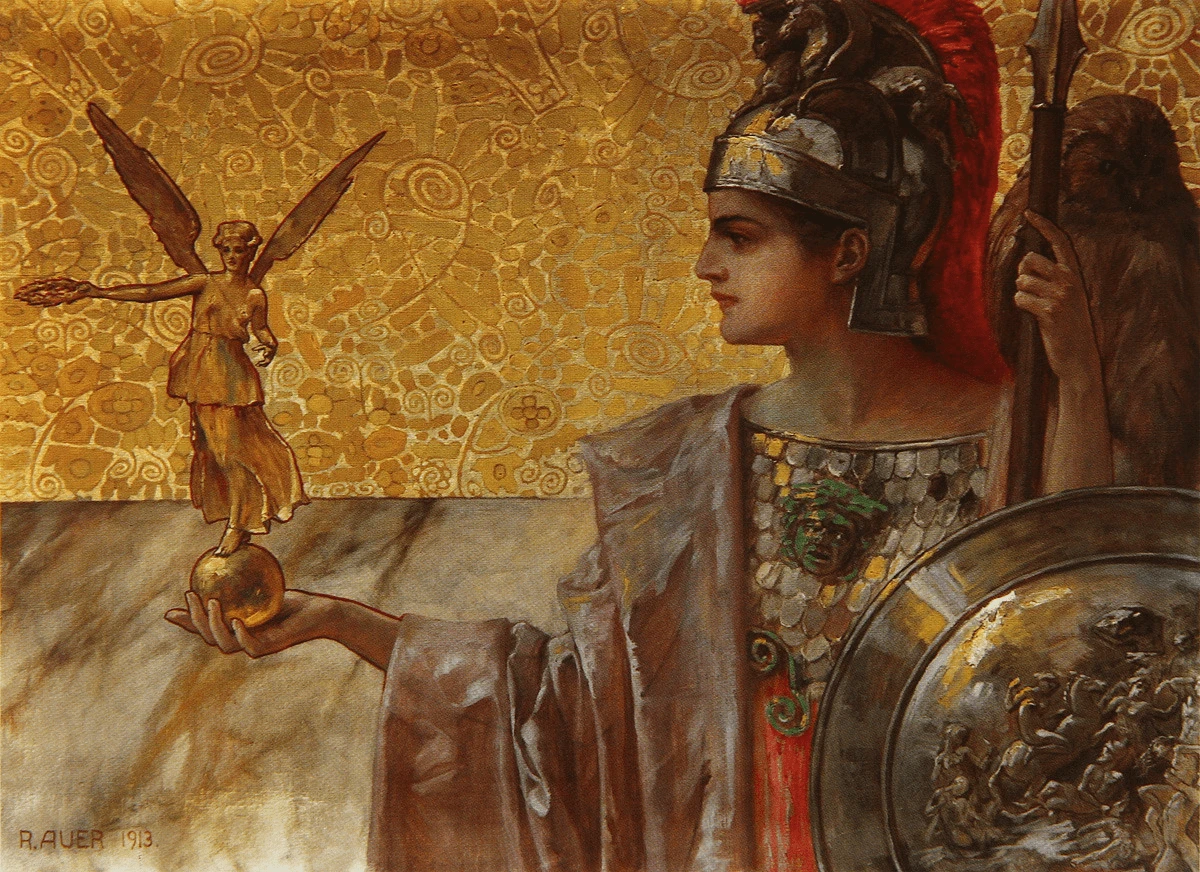
Source: Old Paintings Tumblr
Traits
Athena's paramount rationality and intellectual acumen were central to her character. This distinct trait elevated wisdom above impulsiveness, showcasing her reasonable and thoughtful approach to decision-making, which was a direct result of her sagacity. In conjunction with her rationality, Athena's demeanor exuded maturity and discernment, which went hand in hand with her steadfast commitment to justice (Atsma). Her veneration for this virtue was tangibly expressed through her actions, further deepening the layers of her character and enriching her mythos.
Athena's benevolence shone brightly through her patronage of Athens, a testament to her aspiration to elevate humanity through the channels of knowledge and civilization (Cartwright). Her character, multi-faceted and adorned with attributes like intelligence, integrity, and compassion, intricately contributed to the rich tapestry of Greek mythology. Athena, as a deity of profound complexity, continues to be a timeless emblem of wisdom and virtue in the annals of human storytelling.
Symbols
Athena's symbols were powerful representations, encapsulating the vast scope of her dominion. The owl, a creature symbolizing wisdom and vigilance, is profoundly associated with Athena's persona, signifying her sagacity and watchful guardianship. The olive tree, a significant offering from Athena to Athens, also stood as a living embodiment of peace and prosperity. This symbol echoed her nurturing and benevolent qualities, reinforcing her multifaceted influence (Kapach).
On the other hand, her martial prowess was eloquently represented by her shield and spear, iconic emblems of warfare that underscored her strategic acumen. Moreover, the aegis, a protective cloak or shield adorned with the Gorgon's head, emphasized her divine authority and power, enhancing her commanding presence (“Athena - New World Encyclopedia”).
Each symbol served as a visual prism through which Athena's diverse dimensions were refracted. Collectively, they symbolized her multifaceted nature and spotlighted her significance across various realms, cementing her status as an embodiment of wisdom, strength, and strategic mastery
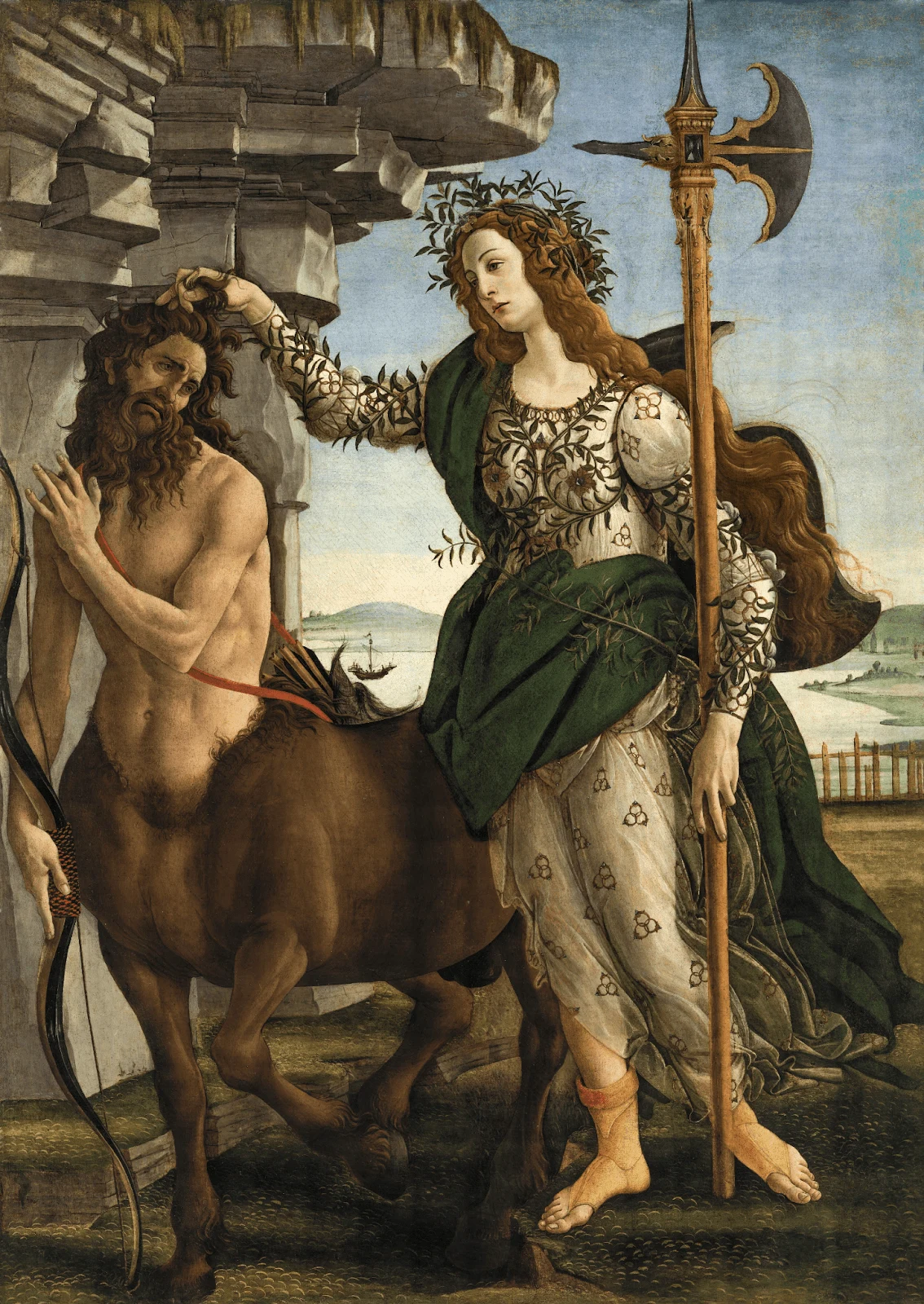
Source: Daily Art Magazine
Festivals and Rituals
Ancient Greek culture was significantly influenced by Athena, whose impact was evident in the various rituals and festivals that were celebrated. One of the most prominent celebrations, the Panathenaia, was a clear testament to Athena's revered status. It was a grand event that involved athletic competitions, musical showcases, and dramatic performances, all of which emphasized Athena's patronage of intellectual and physical pursuits (“Athena - New World Encyclopedia”). The festival served as a vivid example of the breadth of Athena's influence on various aspects of society.
The Parthenon, an impressive architectural wonder dedicated to Athena Parthenos, was a constant reminder of her enduring presence. This monumental structure symbolized her role as the guardian and patron of the city, serving as a tangible testament to her timeless influence. Additionally, various rituals, such as the reenactment of her contest with Poseidon, reinforced her connection with wisdom and highlighted her pivotal role in shaping the city's identity. These intricate rituals and grand festivals serve as enduring tributes to Athena's multifaceted persona and diverse contributions, encapsulating the essence of her revered position within Greek society.

Source: Saatchi Art
Legends associated with Athena
Athena, the goddess of wisdom, courage, and strategic prowess, has been a key figure in Greek mythology for centuries, captivating the imagination of countless generations. Her myths and legends have offered invaluable insights into her origins, her unique attributes, and her enduring impact on the world around us. Through her stories, we understand the importance of wisdom, courage, and strategic thinking in all aspects of life.
Origin story
The story of Athena's birth is intricately tied to the tumultuous dynamics of the divine realm. According to legend, Athena was born from the forehead of her father, Zeus. This extraordinary birth resulted from Zeus ingesting his first wife, Metis, who was carrying Athena. A prophecy had foretold that Metis' offspring would surpass Zeus in power, so to prevent this from happening, Zeus consumed Metis, not knowing that Metis was pregnant with Athena.
After eating his wife, Zeus was plagued by a severe headache and sought relief by having Hephaestus cleave open his head with an ax. However, it was then that Athena emerged fully grown and armored, symbolizing her immediate readiness for battle and her unique status among the Olympian deities (Atsma).
The myth of Athena's birth captures the complexities of divine prophecy and power dynamics. Athena's emergence, fully formed and clad in armor, represents her martial prowess and strategic insight, positioning her as a formidable warrior goddess from birth. Although variations of this origin story may exist in different retellings and interpretations, the core elements of Athena's birth from Zeus's forehead and her immediate manifestation as a warrior goddess remain constant.
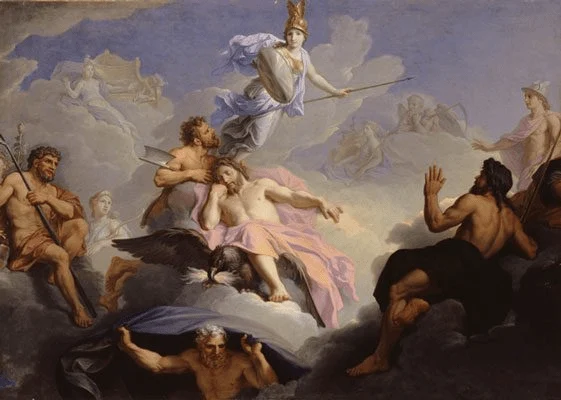
Source: The Historian’s Hut
The Battle for Athens: A Fight for Power and Glory
The myth of Athena and Poseidon competing for patronage over Athens is well-known and highlights the importance of the goddess in the city's identity. The citizens of Athens desired a patron deity who could bestow a meaningful gift upon the town. Athena and Poseidon, two powerful Olympian deities, responded by presenting their offerings and competing for the coveted role of protector. The sea god Poseidon used his trident to strike the ground, causing a spring of salt water to gush forth. However, Athena's offering was equally significant and demonstrated her wisdom and benevolence. She gifted the city the olive tree, symbolizing peace, prosperity, and fertility (Cartwright).
The Athenians were faced with a pivotal decision: to choose between Poseidon's gift of a saltwater spring or Athena's gift of an olive tree. Their choice determined their patron deity and symbolized their values and aspirations as a city. Ultimately, the Athenians chose Athena's gift of the olive tree, recognizing the intrinsic value of peace and abundance. This choice established Athena as the city's patron goddess and solidified her role as a protector and provider. Her gift resonated deeply with the Athenians, signifying her influence over their agriculture, economy, and overall well-being.
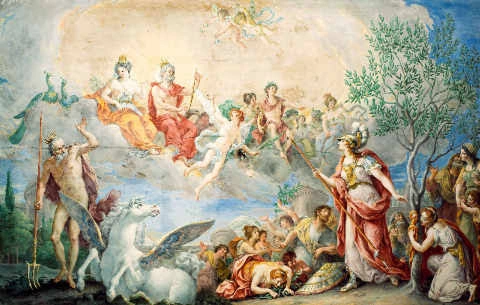
Source: Getty Images
The Story of Erichthonius
The tale of Erichthonius is a captivating myth that showcases Athena's protective and compassionate nature, as well as her significance in shaping the destiny of mortals. Erichthonius, born to the Earth goddess Gaia and the divine blacksmith Hephaestus, had a unique and intriguing form that was a combination of human and serpent. In some versions of the myth, Athena's involvement begins with Hephaestus attempting to rape her, resulting in his seed falling on the earth and fertilizing Gaia, leading to Erichthonius's birth. Athena, in her wisdom and benevolence, took Erichthonius under her wing and concealed him in a chest, which she entrusted to the daughters of Cecrops, the first king of Athens. This act protected the vulnerable Erichthonius and established Athena's connection to the city.
Athena's decision to care for Erichthonius rather than reject him emphasizes her nurturing and protective nature. She embraced his uniqueness and elevated him from a vulnerable infant to a protected and esteemed figure. In doing so, Athena demonstrated her capacity to value and shelter those who might be viewed as different or unconventional (Wikipedia Contributors).
Moreover, the myth of Erichthonius solidifies Athena's bond with Athens. The chest containing Erichthonius was placed within a sacred temple on the Acropolis, becoming a potent symbol of Athena's guardianship over the city. The people of Athens revered Erichthonius as a revered ancestor, further reinforcing Athena's role as a city's protector.
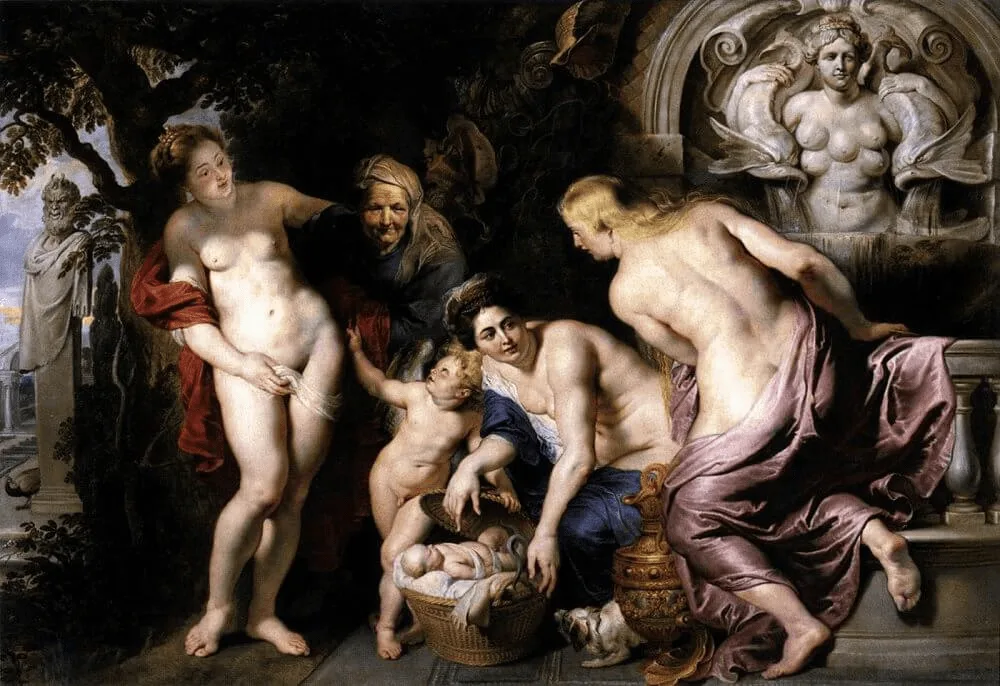
Source: Peter Paul Rubens
Influences of other religions/cultures on Athena
The significance of Athena, a figure from Greek mythology, extends beyond the boundaries of ancient Greece. Her persona embodies wisdom, a concept that transcends cultural and temporal boundaries and is present in other religious traditions worldwide. The Hindu goddess Saraswati , for example, shares similar attributes as a deity of knowledge and learning. Saraswati is celebrated for her embodiment of wisdom, music, and arts in Hinduism, and her association with education, the arts, and intellectual pursuits closely aligns with Athena's role as the patroness of wisdom, strategy, and creative endeavors.
The similarities between the Roman goddess Minerva and the Greek goddess Athena are noteworthy. Both are considered goddesses of wisdom, medicine, arts, and strategy, indicating the enduring importance of knowledge across various cultures (Wikipedia Contributors). These parallels provide valuable insights into the transcendent nature of wisdom as an archetype. The universal appeal of learning demonstrates shared aspirations and values that transcend cultural boundaries. Athena's influence extends beyond her Greek origins, creating a tapestry of universal wisdom that unites diverse religious and cultural narratives.
Modern appearances
The significance and lasting impact of Athena on contemporary society cannot be overstated. As the embodiment of wisdom and intellect, she serves as a source of inspiration for educational institutions and organizations that prioritize knowledge and strategic acumen. Athena's multifaceted character is evident in various art forms, literature, and media, which bear witness to her enduring relevance and ability to capture the modern imagination. One of the most notable examples of Athena's legacy is the city of Athens, which remains a cultural and intellectual hub that reinforces the goddess's connection to wisdom, knowledge, and strategic brilliance (Wikipedia Contributors).
Final thoughts
The legends surrounding Athena, the Greek goddess, offer a fascinating glimpse into her multifaceted character. From her extraordinary birth to her role as a guardian and patron, these myths underscore her diverse attributes: wisdom, courage, and artistic flair. It is noteworthy that Athena's influence extends beyond the confines of Greek mythology and reverberates across cultures and modernity. As such, she emerges as a timeless symbol of wisdom, guidance, and unwavering feminine strength, capturing the essence of enduring myth and eternal wisdom. It is clear from the myriad of tales surrounding her that Athena is a figure of great complexity, embodying both the virtues and vices that define humanity. Nevertheless, her unwavering commitment to truth, justice, and the greater good has endeared her to generations of people, making her an icon of enduring appeal and inspiration.
References
“Athena - New World Encyclopedia.” Www.newworldencyclopedia.org, www.newworldencyclopedia.org/entry/Athena.
Atsma, Aaron. “ATHENA - Greek Goddess of Wisdom, War & Crafts.” Theoi Greek Mythology, 2000, www.theoi.com/Olympios/Athena.html.
Cartwright, Mark. “Athena.” World History Encyclopedia, 24 May 2012, www.worldhistory.org/athena/.
Kapach, Avi. “Athena.” Mythopedia, 6 Dec. 2022, mythopedia.com/topics/athena.
Wikipedia Contributors. “Athena.” Wikipedia, Wikimedia Foundation, 14 Dec. 2018, en.wikipedia.org/wiki/Athena.
Persephone: Goddess of Spring, and Queen of the Underworld
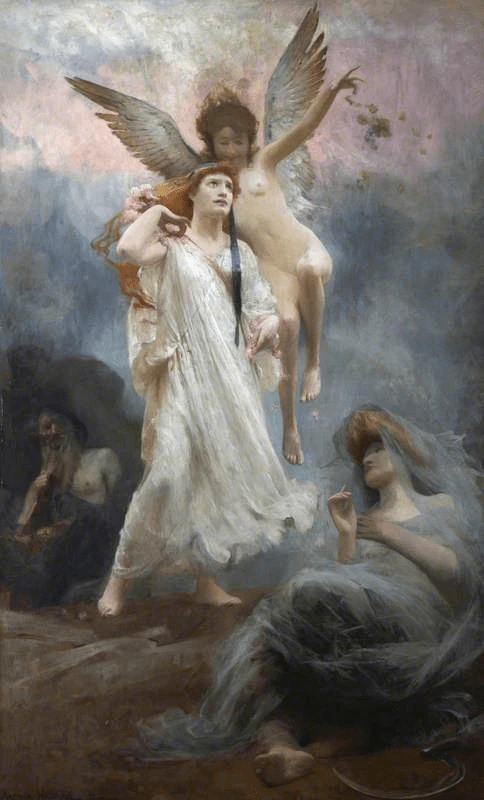
Source: Greek Legends and Myths
Persephone, a prominent figure in Greek mythology, presents a fascinating and multifaceted persona. Revered as both the Goddess of Spring and the Queen of the Underworld, she embodies the intricate balance between life and death while exploring themes of growth, authority, and the cyclical nature of seasons. As a renowned Olympian deity, Persephone's narrative offers insight into ancient beliefs and human perceptions of the natural world.
Overview of Persephone
Persephone's essence is intricately woven into the very fabric of the changing seasons, heralding the arrival of spring as the goddess of new beginnings and fresh life. Celebrated for her indelible link to the blossoming landscapes, her influence extends far beyond the earthly realm. As the formidable Queen of the Underworld, she reigns alongside Hades (Wikipedia Contributors), her impact felt even in the depths of the afterlife.
Persephone is the offspring of Zeus, the king of Gods, and Demeter, the goddess of agriculture and fertility (“Persephone - New World Encyclopedia”). Holding dominion over agriculture and harvest, the name "Persephone" is derived from the archaic Greek term "pertho," which signifies bringing forth and causing to fall. In addition to Persephone's primary name, she is also known by the alternative appellation of Kore, which conveys her youthful and maidenly aspects, further enriching her complex identity (“Who Was Persephone in Greek Mythology? | Study.com”).
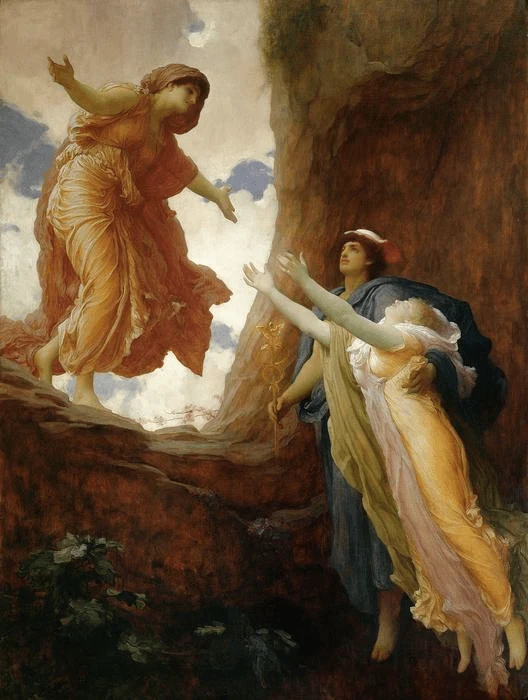
Source: Greek Legends and Myths
Titles
Queen of the Underworld
Goddess of Vegetation
Bringer of Seasons
Abilities
Persephone's multifaceted abilities are a testament to the vastness of her divine domains, seamlessly blending her roles as a goddess of the underworld and fertility. Her unique ability to bring forth new life and stimulate growth is evident in the blooming of flowers and revitalizing Earth's landscapes. This innate power bestows upon her the capacity to guide the natural cycles of life, emphasizing her significance as a symbol of rejuvenation. In stark contrast, her connection to the underworld grants her the authority to govern the souls of the departed. This duality of power aptly exemplifies her sway over the complex interplay between existence and demise, a central theme in Greek mythology. Through her dual nature, Persephone bridges the realms of life and death, embodying the timeless cyclical forces that shape humanity's understanding of existence (Cartwright).
Characteristics
The countenance and demeanor of Persephone beautifully reflect the harmonious balance between her dual dominions. As the Queen of the Underworld, she exudes an aura of regality and authority that commands reverence from mortals and gods alike. Draped in attire befitting her exalted station, she effortlessly assumes her mantle and establishes herself as an invincible force (“Persephone - New World Encyclopedia”).
Yet, in her identity as the goddess of spring, Persephone adorns herself with symbols of burgeoning life. Garlands of vibrant flowers and robes decorated with delicate petals become extensions of her essence, embodying growth and rebirth. These emblems vividly demonstrate her integral role in the cyclical rhythms of the natural world. The juxtaposition between her majestic portrayal in the underworld and her verdant adornments as a goddess of spring serves as a poignant reminder of her unique capacity to bridge the divide between life and death, illuminating the profound interconnectedness that weaves through her narrative (Cartwright).
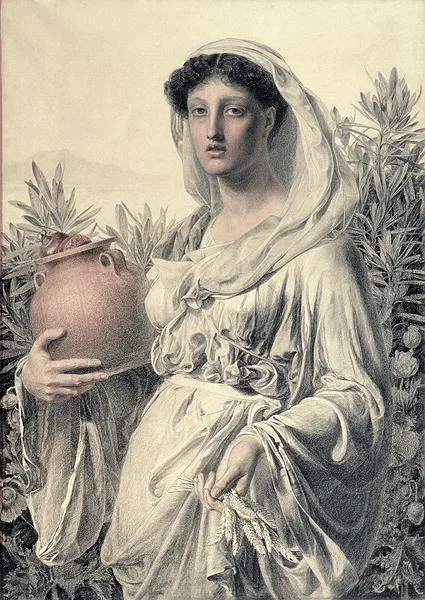
Source: Greek Legends and Myths
Traits
Persephone's multifaceted personality traits offer a captivating glimpse into the intricate layers of her character. Often depicted as a compassionate and empathetic deity, her heart extends its warmth, particularly to the souls of the departed, reflecting a deep understanding of their plight (Cartwright). Her abduction by Hades served as a crucible for empathy, forging a profound connection with those who had experienced a similar fate. This shared experience deepened her compassion and allowed her to bridge the gap between the mortal realm and the world beyond.
Moreover, her benevolence is not confined solely to the realm of the dead. In the mortal world, she graces the land with blessings of fertility and growth, nurturing the crops that sustain humanity. As the bestower of life and the keeper of the underworld, Persephone beautifully encapsulates the duality of existence. This multifaceted nature also instilled within her a sense of resilience and wisdom, attributes that define her as a formidable deity (“Persephone - New World Encyclopedia”). Through her compassion, empathy, and strength, Persephone emerges as a figure whose essence embraces the complexities of the human experience.
Symbols
The mythos surrounding Persephone is abundant with symbols that carry profound layers of meaning, resonating with the multifaceted aspects of her identity (“Persephone”). Perhaps the most significant of these symbols is the pomegranate, renowned for its dual nature encompassing both seeds of life and the birth of death. This emblem encapsulates the essence of Persephone's dual role as Queen of the Underworld and Goddess of Spring's rejuvenation, providing a tangible representation of the perpetual cycle of existence. Thus, the pomegranate's association with her is a poignant reminder of her pivotal place in the cosmic order and the intricate dance of life and death.
In addition to the pomegranate, the narcissus flower emerges as another significant symbol intertwined with Persephone's narrative. This delicate bloom embodies themes of resurrection and renewal, aligning perfectly with her story of descending into the underworld and reemerging to oversee the rejuvenation of the Earth's landscapes. Altogether, these symbols encapsulate the profound depth of Persephone's story and her enduring significance within the tapestry of Greek mythology.
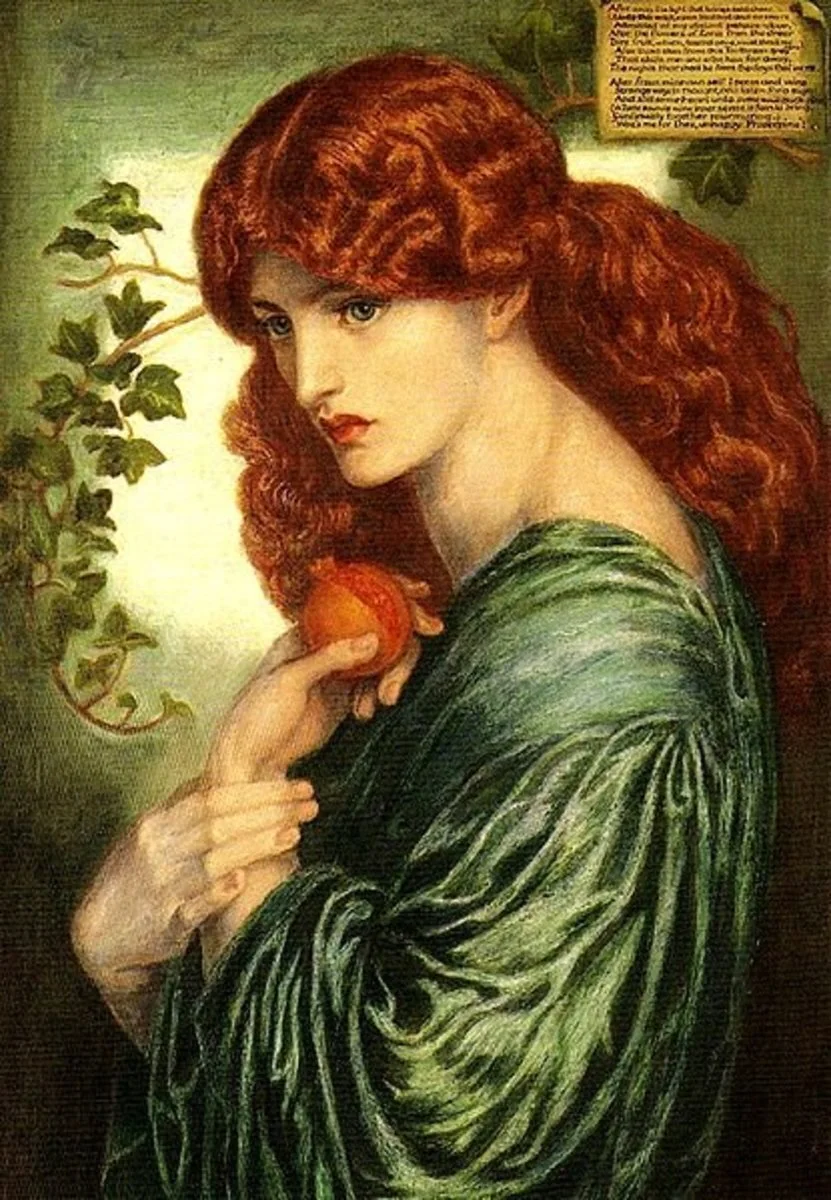
Source: Legend Bridal Designs
Festivals and Rituals
One of the most illustrious celebrations involving the veneration of Persephone is the Eleusinian Mysteries, a series of clandestine rituals that celebrated the veneration of Demeter and Persephone. This well-known ceremony portrayed the myth of Persephone's abduction by the king of the underworld, Hades, from her mother, Demeter, in three phases: the descent, the search, and the ascent. The central theme of the Mysteries was the ascent of Persephone and her reunion with her mother (Wikipedia Contributors). The Mysteries were held in Eleusis and provided a sacred space for initiates to delve into the intricate cycles of life, death, and rebirth. The enigmatic rituals, enriched with symbolic practices and profound teachings, allowed participants to grasp the profound interplay between light and shadow, mirrored in the goddess's narrative.
Another notable festival that paid homage to Persephone was the Thesmophoria, a vibrant celebration exploring fertility and harvest themes. This festival uniquely honored Persephone's role in the abundant growth of crops, and women engaged in various rituals and activities that celebrated her influence over the bounties of the Earth (“Who Was Persephone in Greek Mythology? | Study.com”). The Thesmophoria reaffirmed her status as a deity intricately linked to the sustenance of the land and stood as a testament to the enduring reverence held for Persephone, underscoring her mythos's profound impact on shaping ancient Greek religious observances.
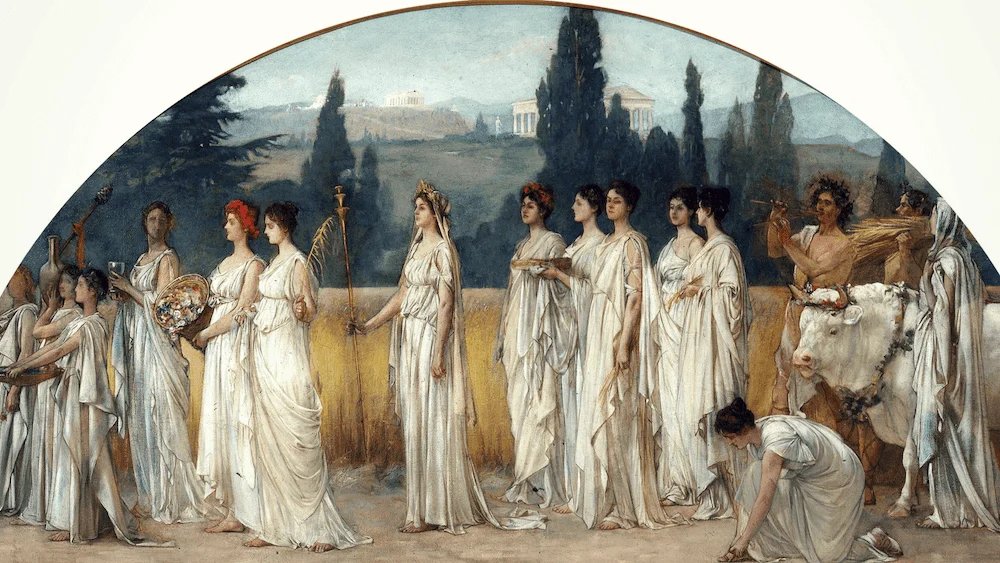
Source: Study Abroad in Greece
Legends associated with Persephone
Persephone is a figure of great mythological and mystical significance. As the embodiment of the delicate balance between life and death, light and darkness, she has been the subject of countless legends throughout history. From her birth to her abduction and its impact on her mother, Persephone's enduring presence and influence have captivated scholars and enthusiasts alike. Her story continues to resonate with many, serving as a reminder of the complex and often intricate nature of the human experience.
Origin story
The Orphic "Rhapsodic Theogony" unravels the genesis of Persephone through a series of unsettling events. In this narrative, Zeus, the sovereign of the gods, is depicted in a disconcerting light as his desires take a deviant turn toward his mother, Rhea. Driven by his yearning for Rhea, Zeus relentlessly pursues her, despite her resistance, causing her to transform into a serpent to evade his advances. Overcoming Rhea's resistance, he rapes her, resulting in the birth of Persephone, and after this Rhea became Demeter.
However, Persephone's birth reveals a deformity that incites fear, prompting Rhea/Demeter's maternal instincts to falter. Overwhelmed by the creation she had brought forth, Rhea/Demeter retreats, leaving Persephone to navigate the complexities of her existence in solitude. However, soon after, within the sanctuary of her mother's abode, Persephone sought refuge and was shielded by the ever-watchful Curetes (Wikipedia Contributors).
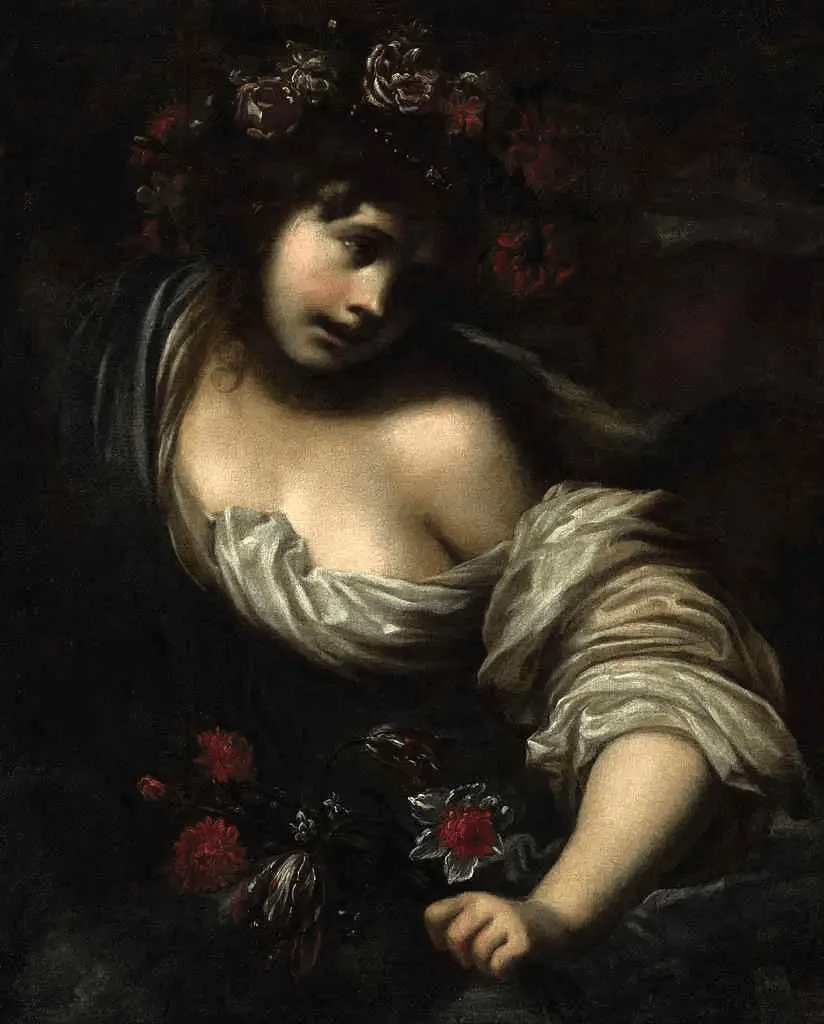
Source: The Collector
The Mythical Tale of Persephone's Abduction and the Intricate Relationship with Hades
The tale of Hades and Persephone has captivated audiences for many generations. According to legend, Hades was smitten with the beautiful Persephone and sought permission from Zeus to abduct her, disregarding her mother Demeter's objections. Persephone was gathering flowers in a meadow with her handmaidens Oceanides, Artemis, and Pallas when Hades suddenly appeared and seized her (Wikipedia Contributors), taking her by force through an aperture in the earth and into his realm in the underworld (“Persephone”).
While many may view Persephone's abduction as a coercive act, the truth is far more complex. Different interpretations of the myth suggest that there may have been a consensual union between the two, indicating a mutual understanding or arrangement (“Who Was Persephone in Greek Mythology? | Study.com”). Persephone's role as the Queen of the Underworld further complicates the traditional notions of captor and captive, with her sharing rulership over the realm of the dead with Hades (Cartwright).
Persephone's transformation and self-discovery are central themes of the abduction narrative. Her time in the underworld allowed her to evolve from an innocent maiden to a powerful and influential deity. Her connection to Hades allowed her to exercise dominion over the souls of the deceased, shaping the afterlife and reinforcing the idea that their relationship is far more complex than a simple abduction (“Persephone - New World Encyclopedia”). Overall, the myth of Hades and Persephone is a story of transformation, power, and self-discovery. While it may have been viewed as a mere abduction in the past, modern interpretations have shed new light on the complexities of their relationship and the significance of Persephone's role as the Queen of the Underworld.
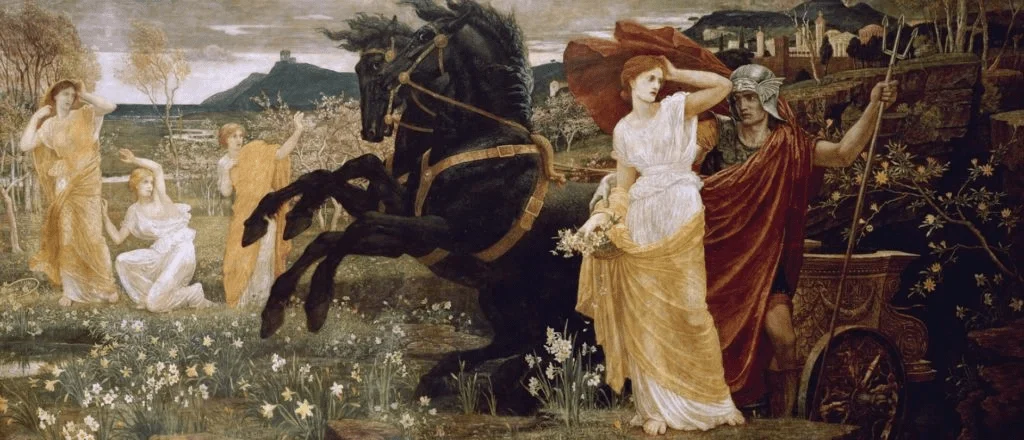
Source: Daily Art magazine
Persephone's Homecoming: A Story of Reunion and Rebirth
The myth of Persephone's time spent in the underworld as the Queen alongside Hades is a profound narrative of transformation and growth. However, her absence from the world above significantly affected the Earth. Demeter, her mother, and the fertility goddess mourned deeply, causing the Earth to wither and lead to the onset of winter (Wikipedia Contributors). According to some versions of the myth, Demeter's grief prompted her to halt the fertility of the Earth, leading to widespread suffering. To restore balance, Zeus intervened and negotiated with Hades. As a result, Persephone was permitted to return to the surface world for a portion of the year, signifying spring's arrival and the Earth's reinvigoration (“Persephone - New World Encyclopedia”).
The story of Persephone's return to the surface world is often associated with her mother's joyous reunion and the subsequent renewal of life. The thawing of the Earth, the blossoming of flowers, and the revitalization of crops mirror the goddess's return and influence as a deity of growth and abundance (“Persephone”). This cyclical dance of descent and ascent highlights Persephone's dual role as a bridge between realms and a symbol of the ever-changing seasons.

Source: Legend Bridal Designs
Influences of other religions/cultures on Persephone
Persephone's mythology extends beyond the confines of Greek culture, resonating throughout the broader spectrum of ancient Mediterranean religious practices (Cartwright). Interestingly, her story bears a striking resemblance to other deities in distant mythologies. For example, in Mesopotamian mythology, the goddess Inanna embarks on an underworld journey that mirrors Persephone's descent, suggesting a universal transformation motif through the realm of the dead (“Who Was Persephone in Greek Mythology? | Study.com”).
Similarly, the Egyptian goddess Isis, renowned for her role in resurrecting her husband Osiris, shares thematic parallels with Persephone's narrative of rebirth and renewal (“Persephone - New World Encyclopedia”). These parallels serve as evidence of cross-cultural exchanges of ideas, demonstrating the capability of mythic motifs to transcend cultural boundaries and enhance the perception of the goddess. Persephone's story becomes a universal emblem of the human experience, a bridge connecting diverse civilizations through the shared themes of life's cyclical rhythms and the eternal interplay of darkness and light (“Persephone”).
Modern appearances
Persephone's timeless allure continues to captivate in the modern era through an array of artistic and literary interpretations, attesting to her enduring resonance (“Persephone - New World Encyclopedia”). As a symbol of transformation and empowerment, she thrives in contemporary literature, films, and artworks exploring her complex character's depths:
Margaret Atwood's "The Penelopiad" reimagines the myth from the perspective of Penelope, incorporating Persephone's narrative into the broader tapestry of ancient tales.
A.S. Byatt's "The Virgin in the Garden" The narrative explores the interweaving of mythology and reality using Persephone's mythic threads.
Lore Olympus is a contemporary romantic webcomic that presents a modern adaptation of the tale of the abduction of Persephone.
These adaptations and inspirations underscore Persephone's abiding relevance in the human psyche, demonstrating how her tale of cycles, growth, and resilience continues to evolve and thrive in the modern creative landscape.
Final thoughts
The legends of Persephone stand as a testament to this goddess's enduring allure and complexity. Through her origin story and the varied interpretations of her myth, her influence transcends cultures and time. Her tale is a poignant reminder of the delicate balance between life and death, light and darkness. It ultimately illuminates the human experience and the profound mysteries that lie within it.
References
Cartwright, Mark. “Persephone.” World History Encyclopedia, 24 Mar. 2016, www.worldhistory.org/persephone/.
“Persephone.” Mythopedia, mythopedia.com/topics/persephone.
“Persephone - New World Encyclopedia.” Www.newworldencyclopedia.org, www.newworldencyclopedia.org/entry/Persephone.
“Who Was Persephone in Greek Mythology? | Study.com.” Study.com, 2019, study.com/academy/lesson/who-was-persephone-in-greek-mythology.html.
Wikipedia Contributors. “Persephone.” Wikipedia, Wikimedia Foundation, 9 Dec. 2018, en.wikipedia.org/wiki/Persephone.
Like this project
Posted Sep 28, 2023
A client hired me to write several informative pieces on the Greek Goddesses Aphrodite, Eos, Selene, Nyx, Athena, and Persephone.
Likes
1
Views
2.6K
Timeline
Jul 31, 2023 - Sep 30, 2023
Clients

Grounded Insights







